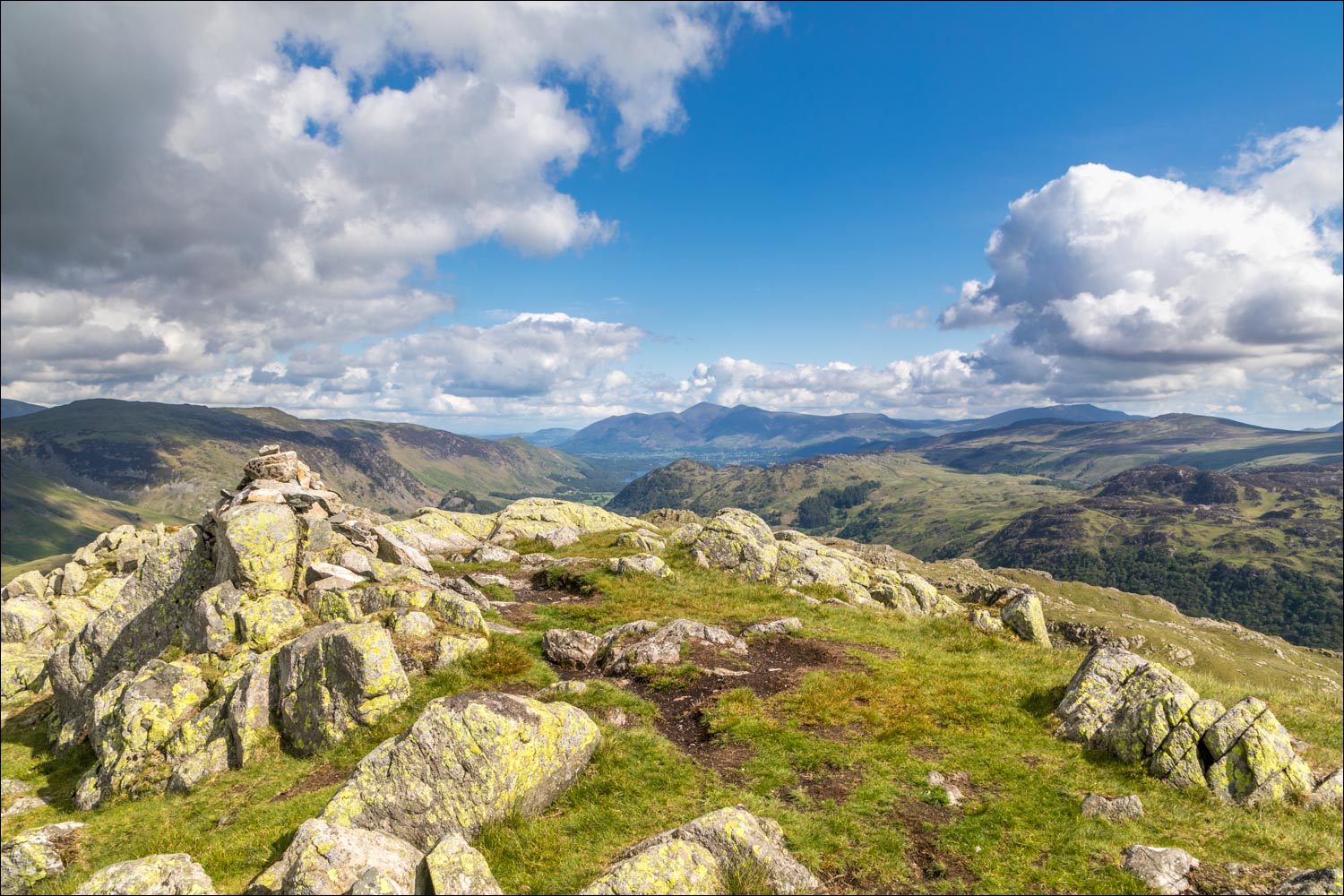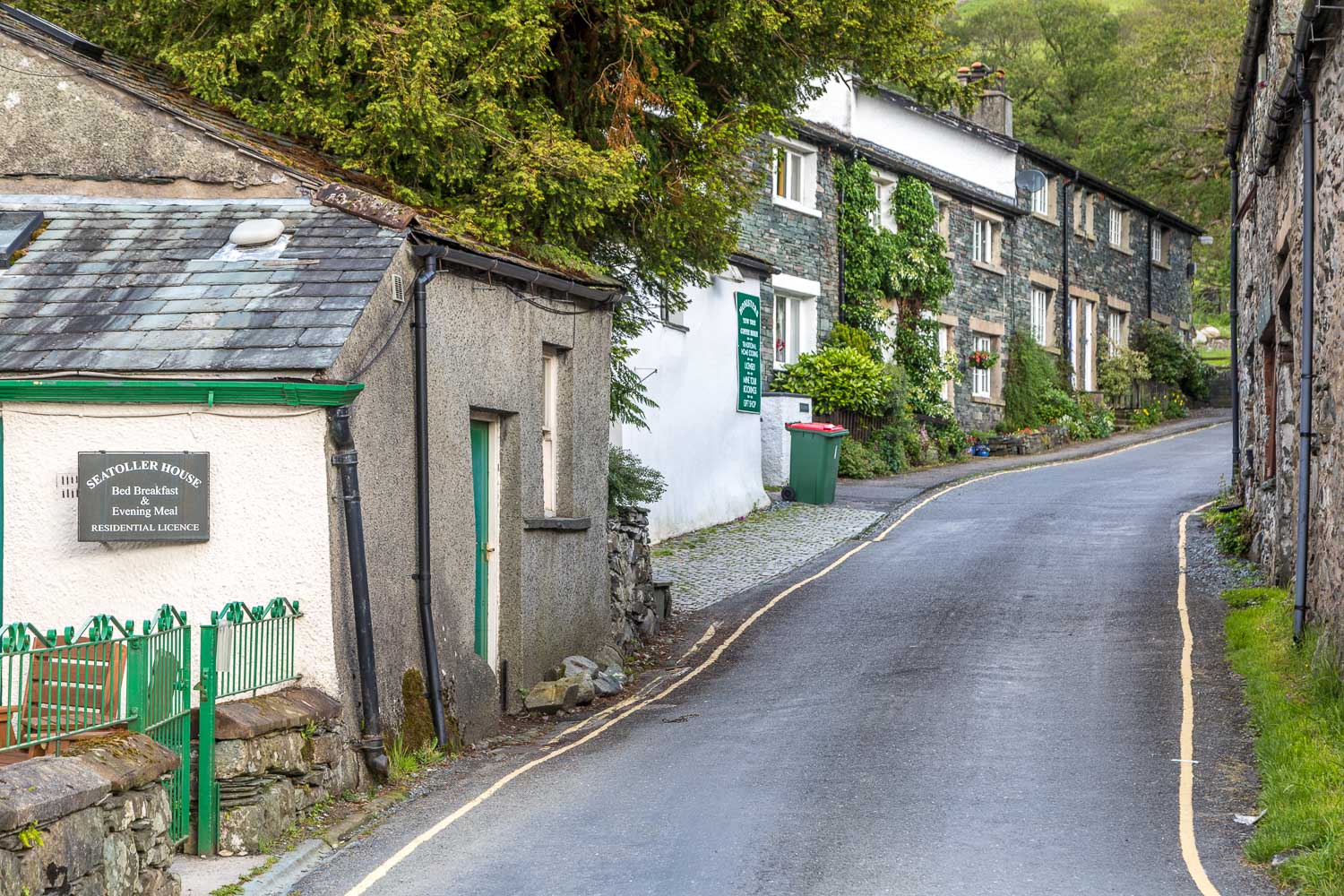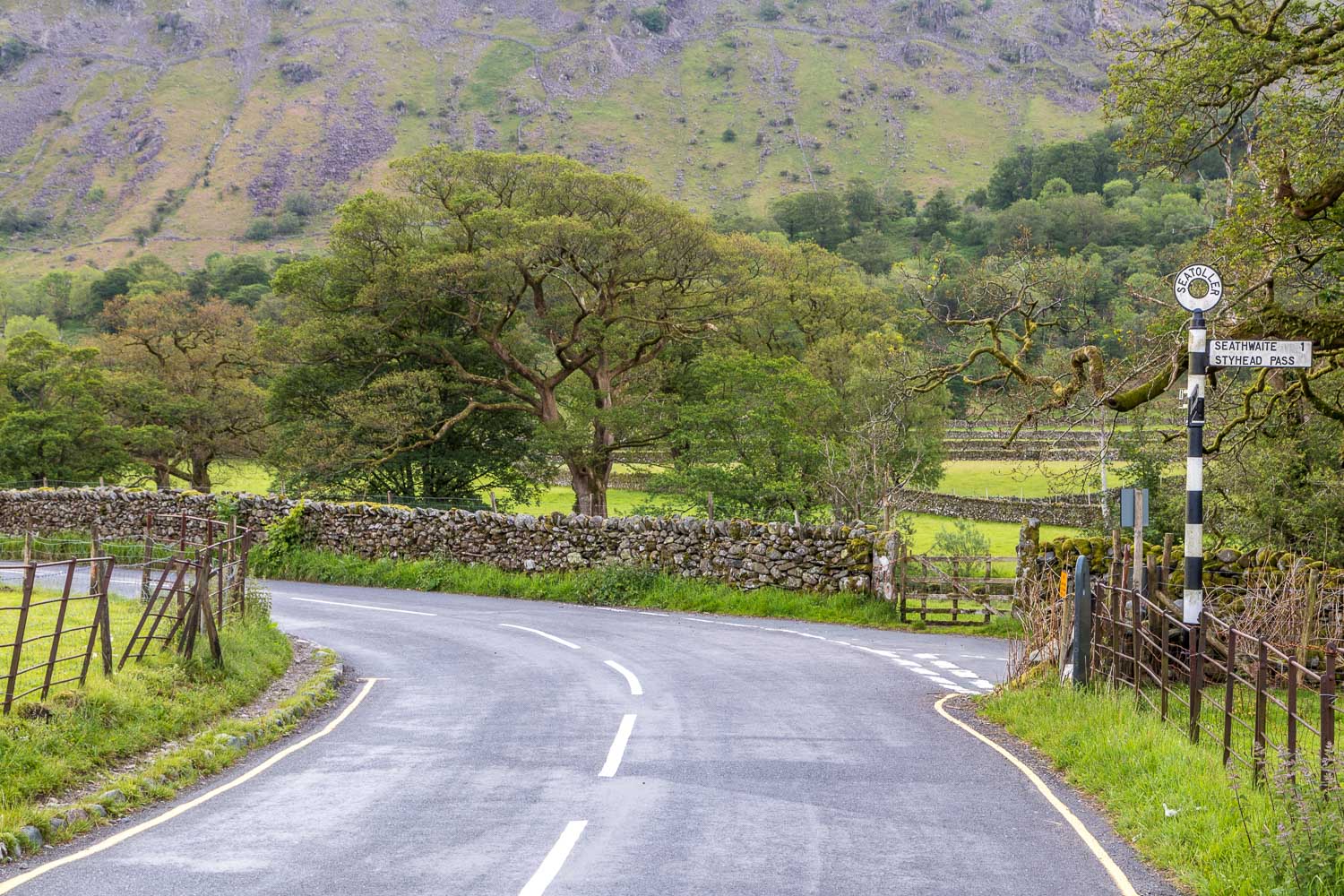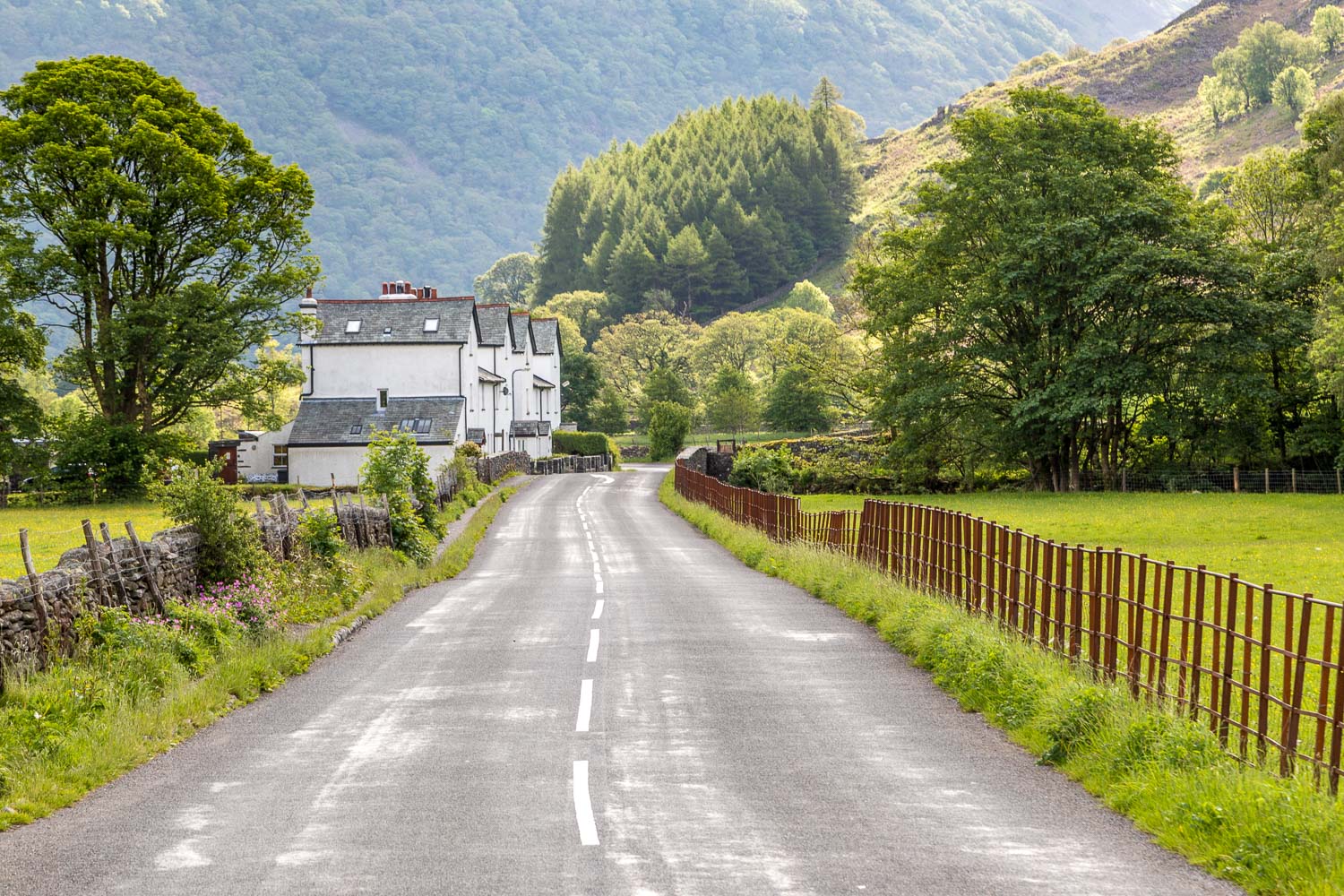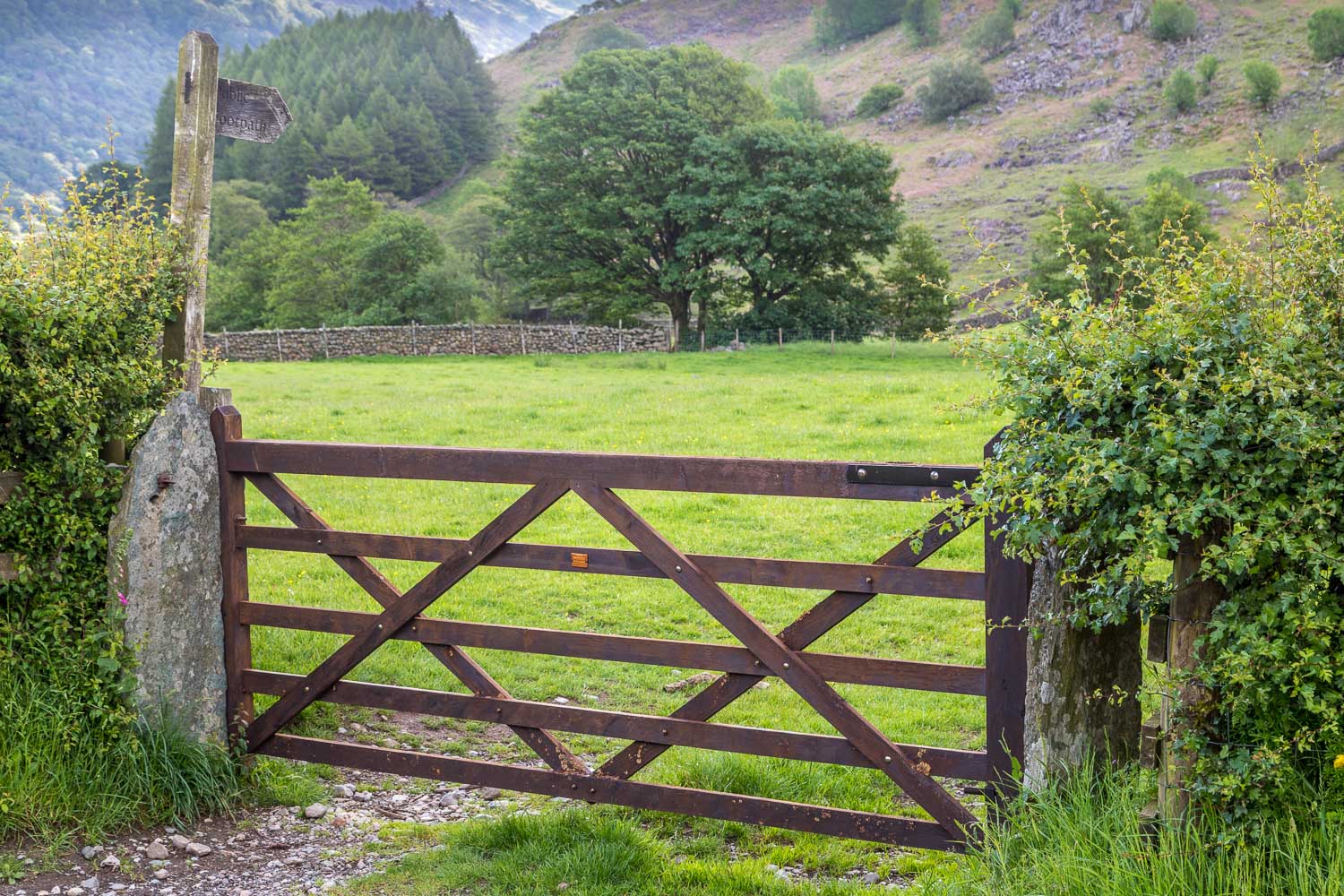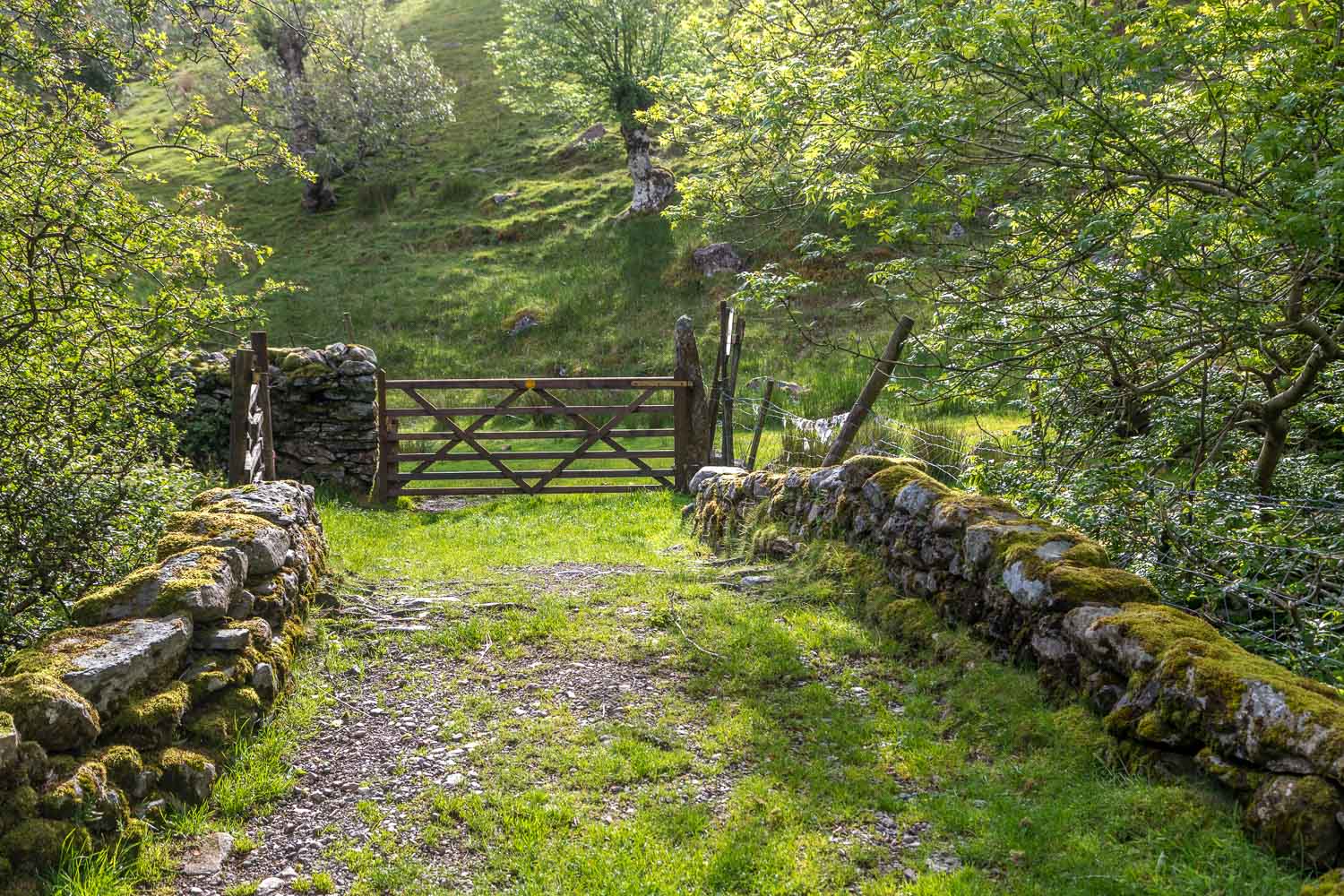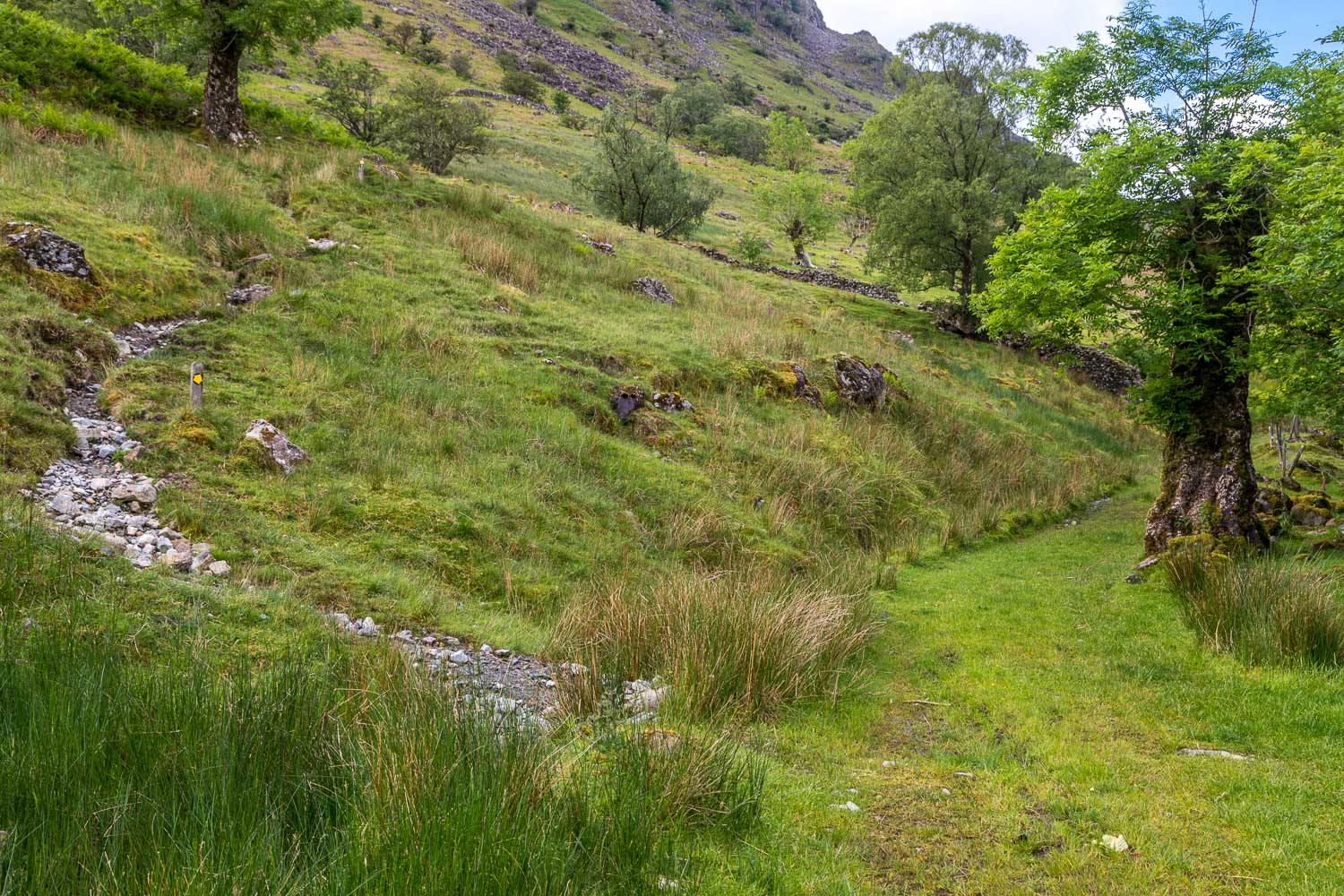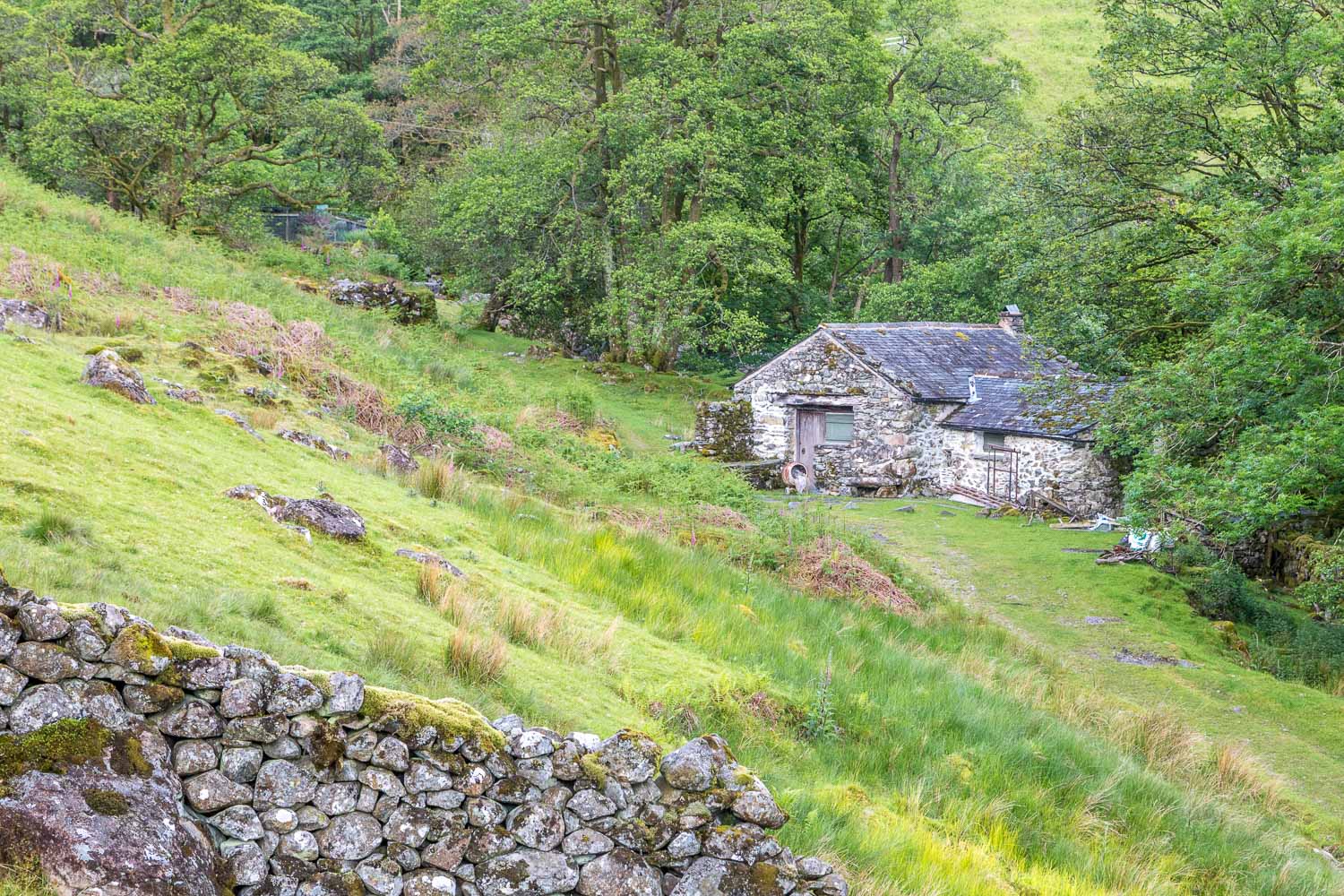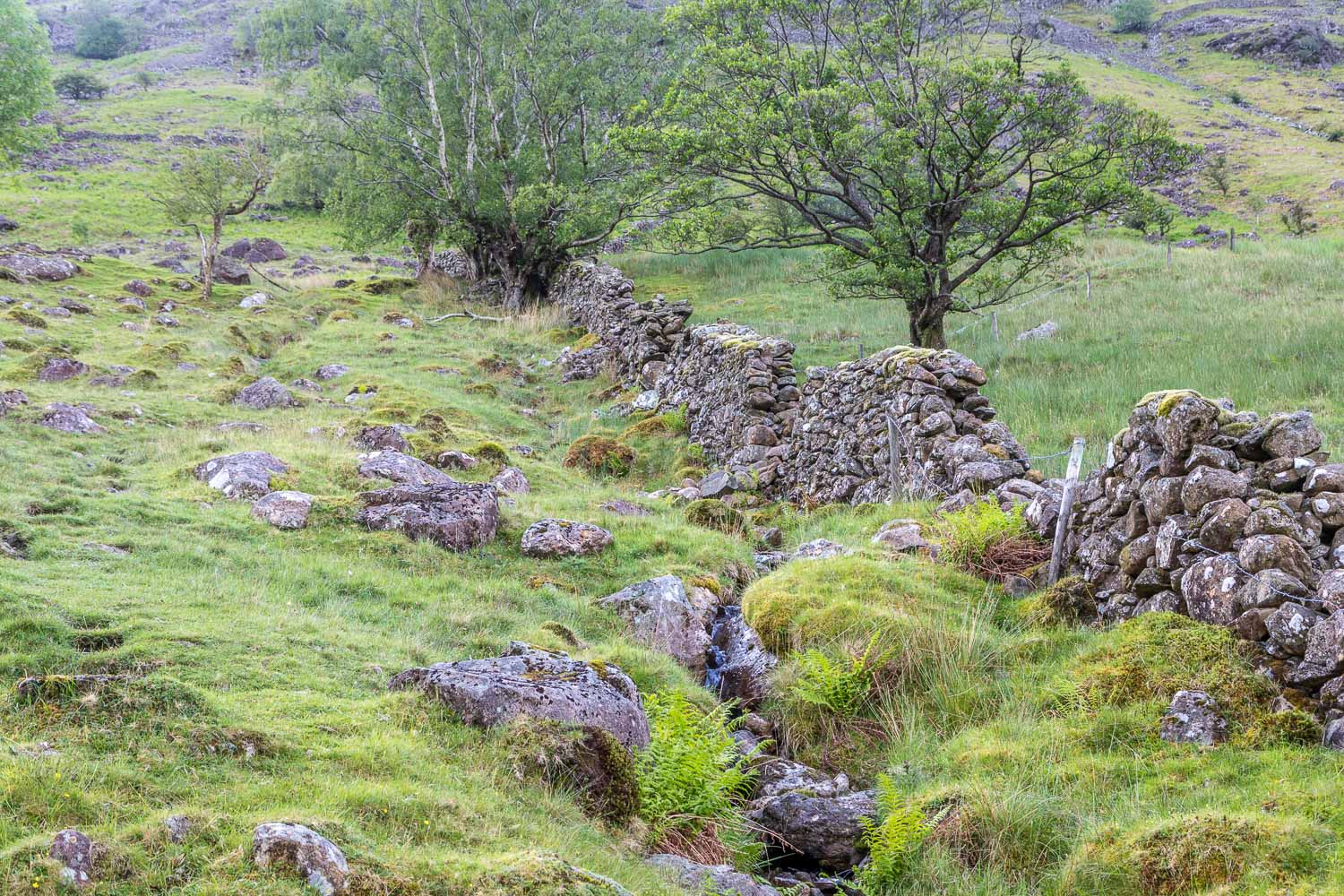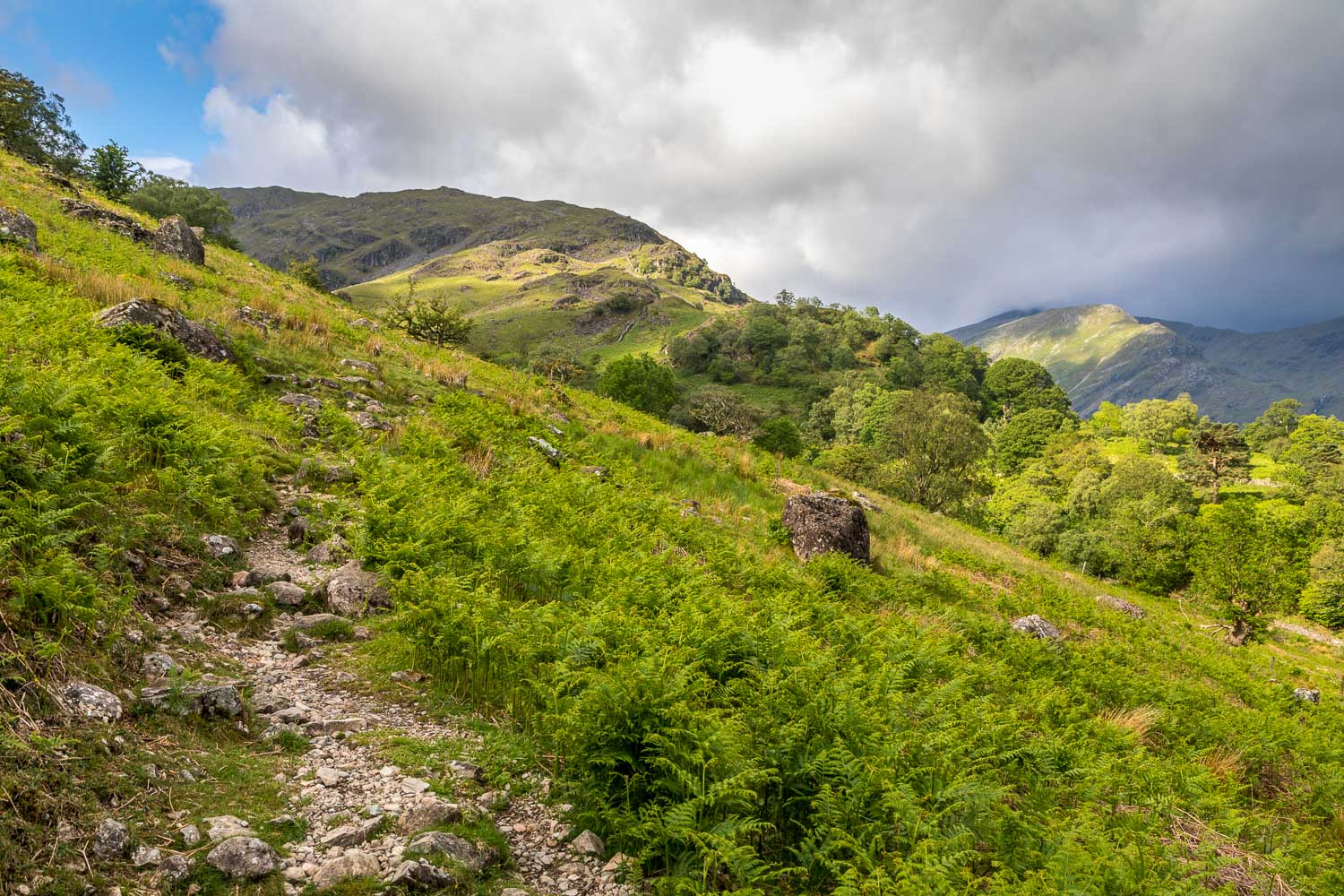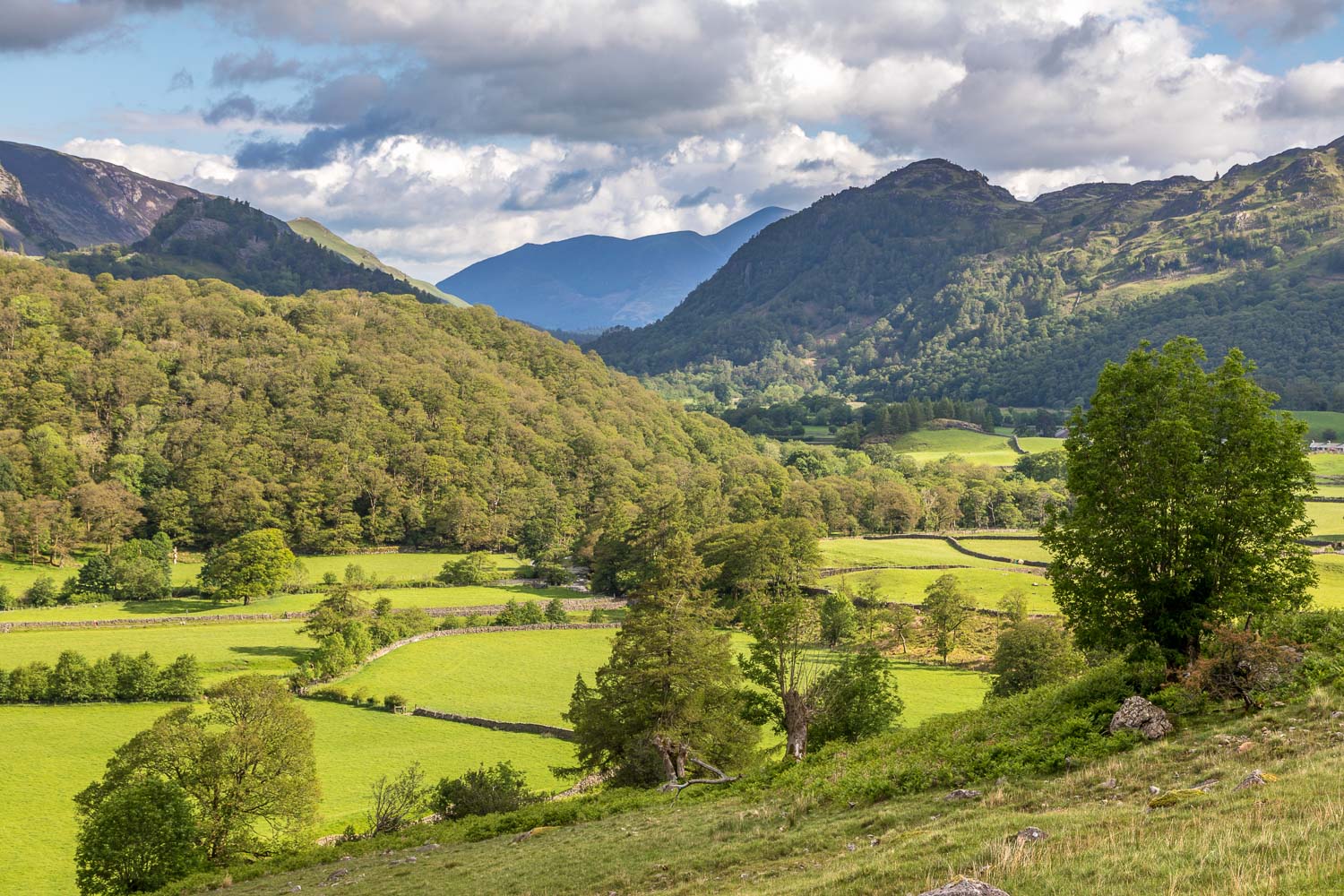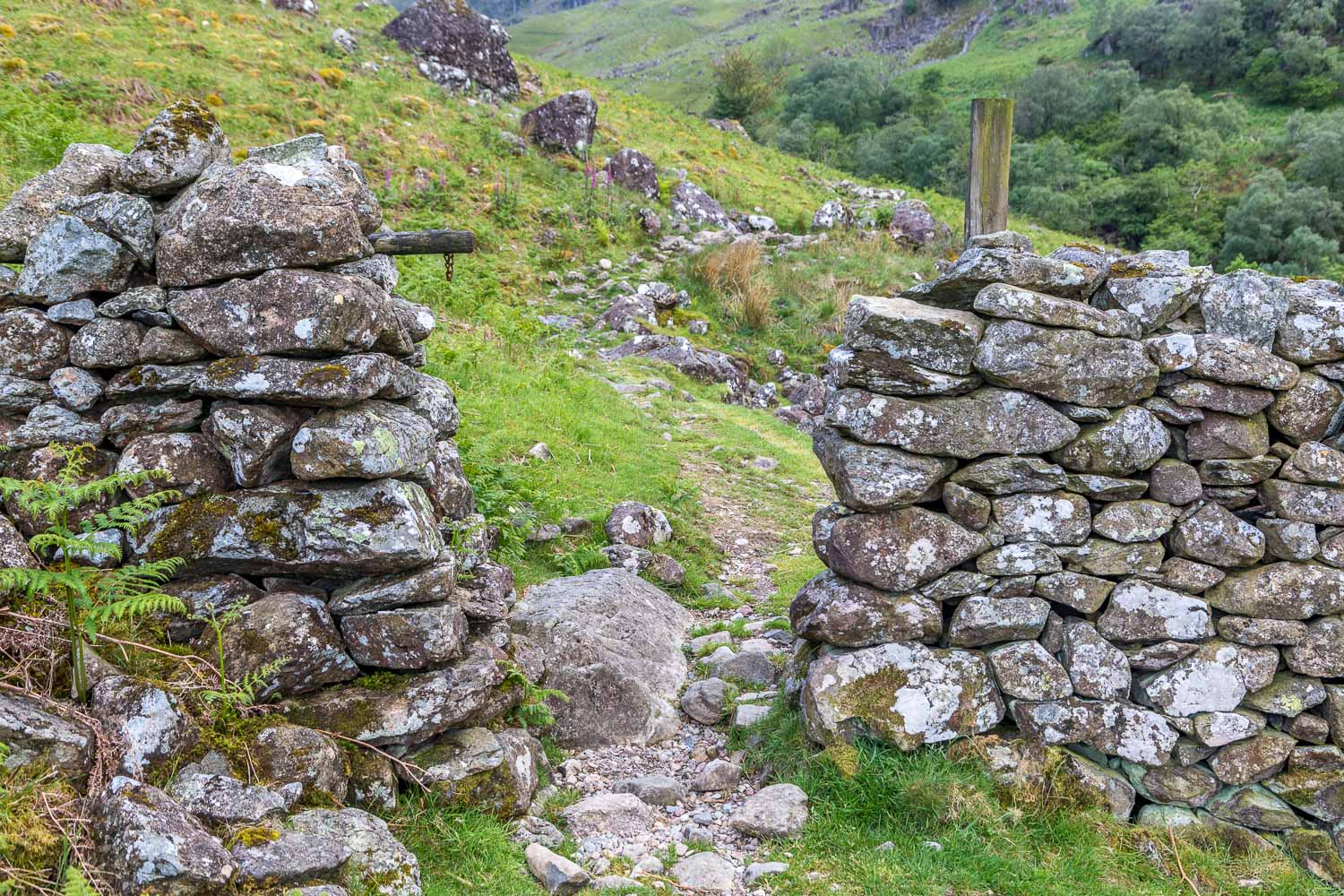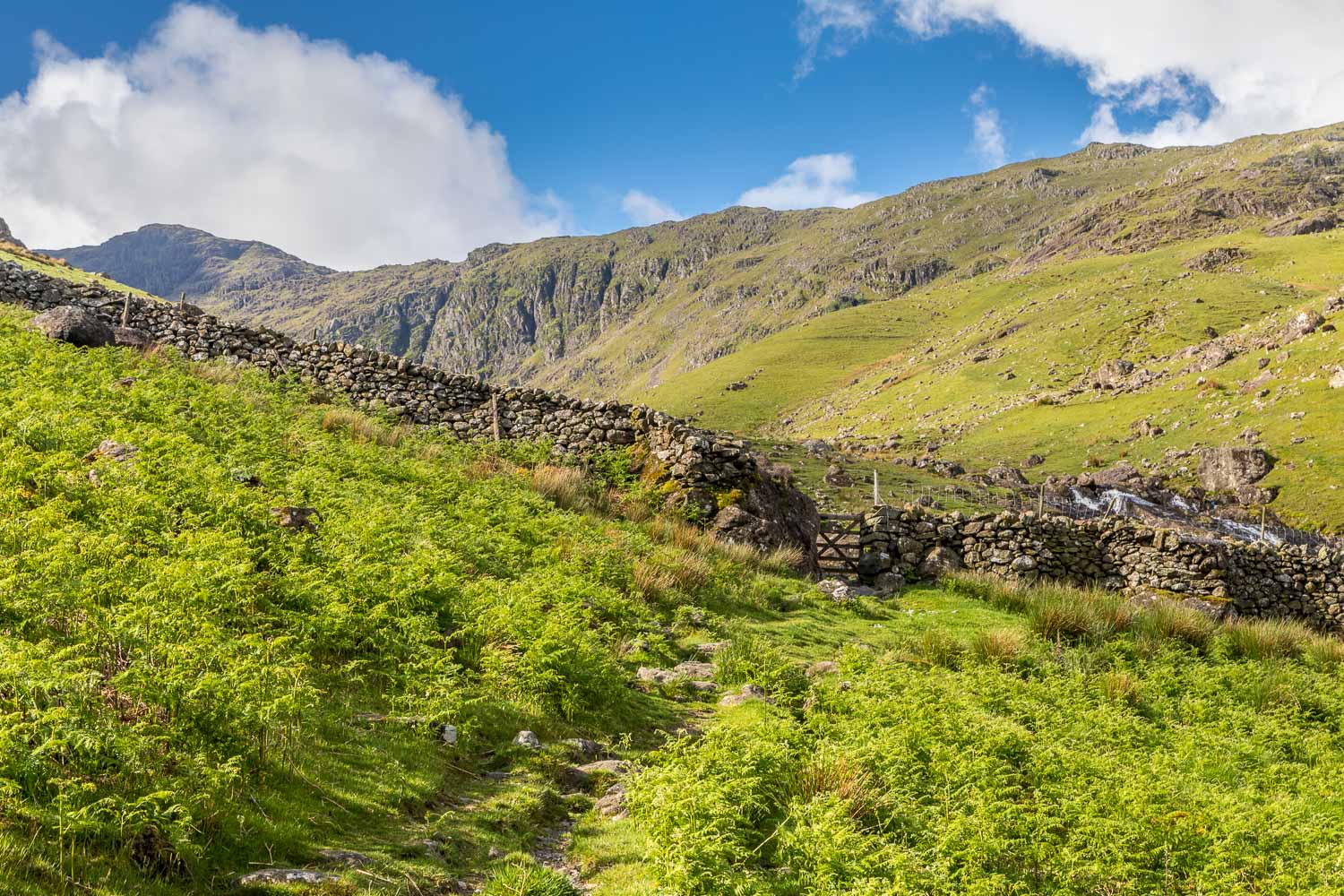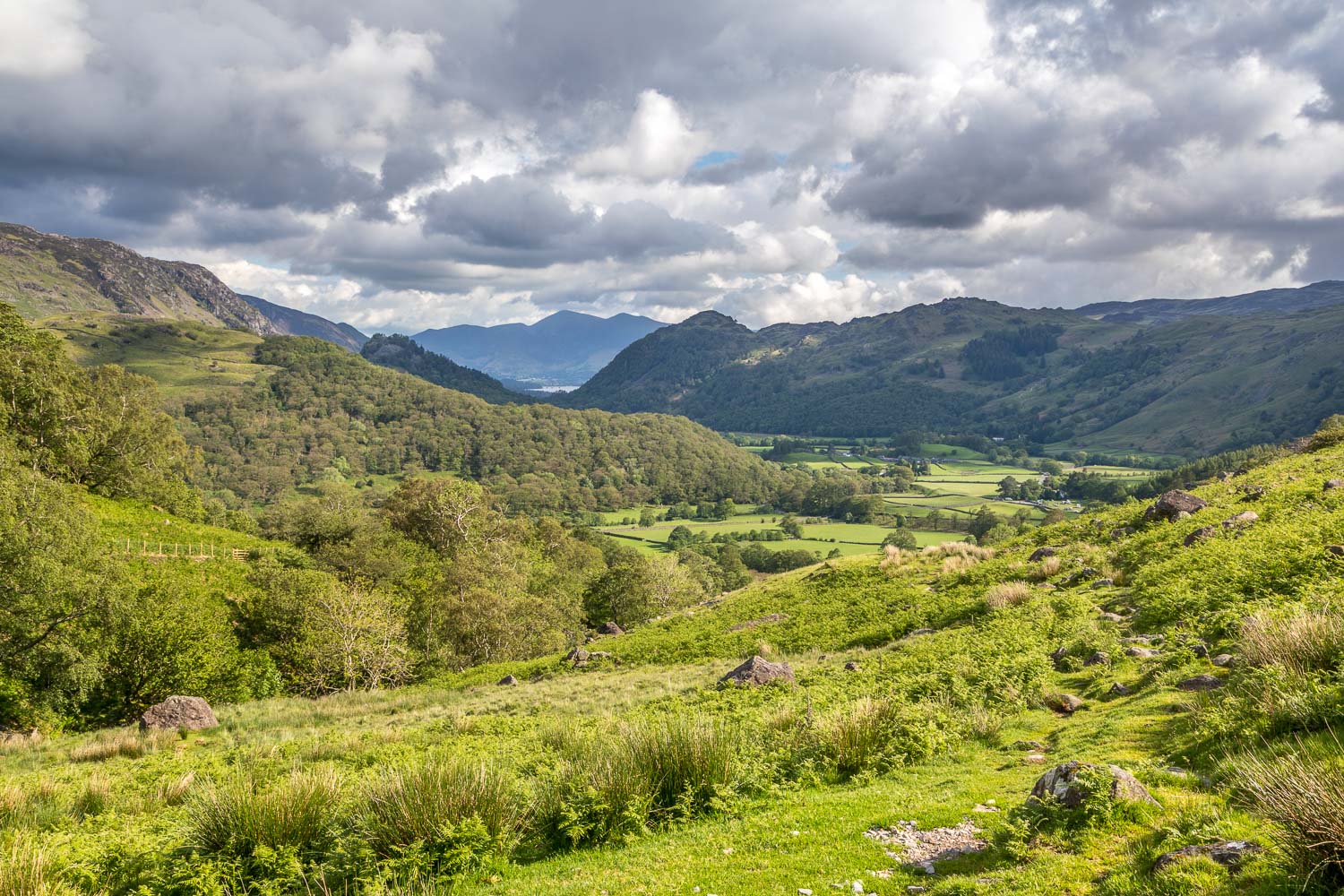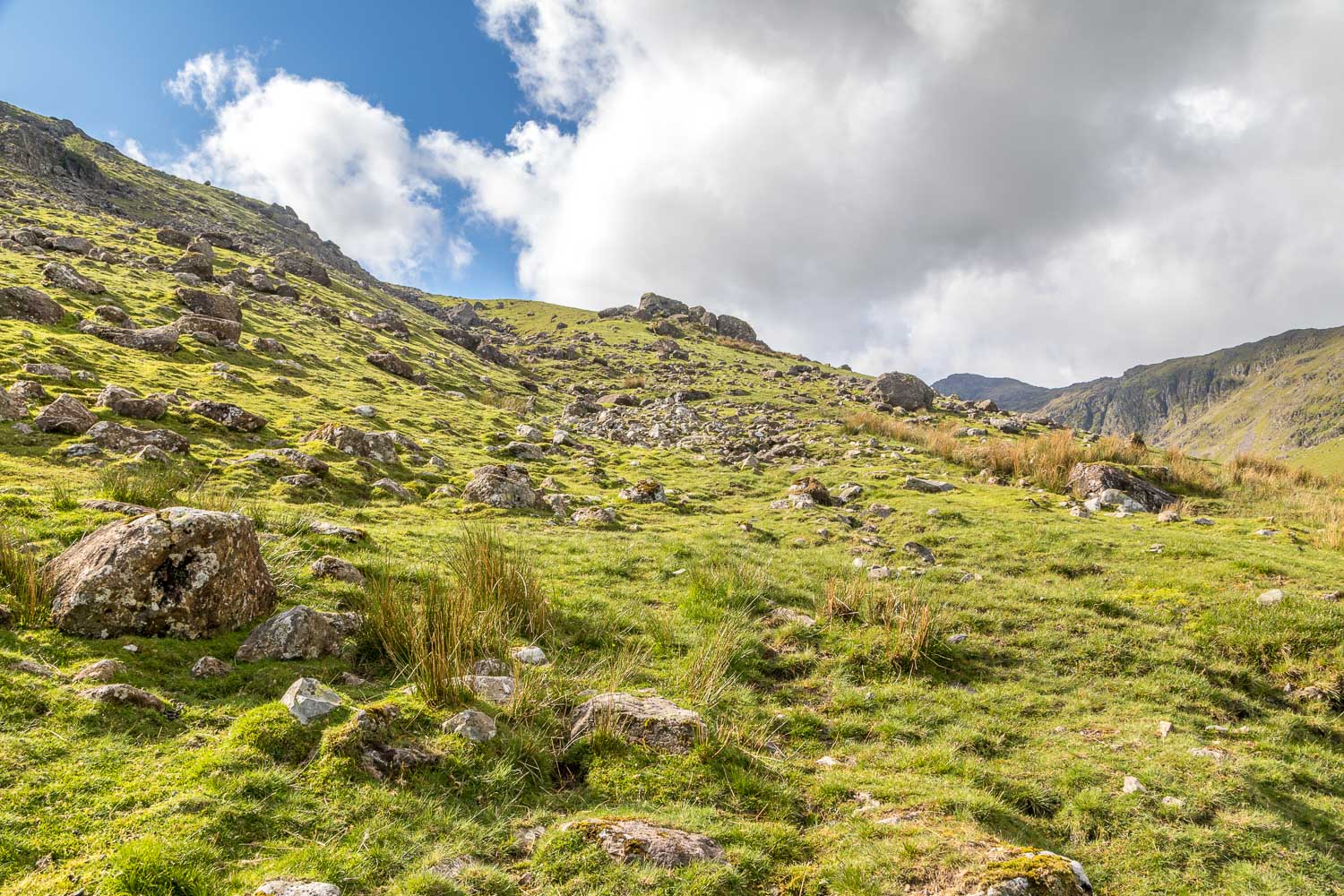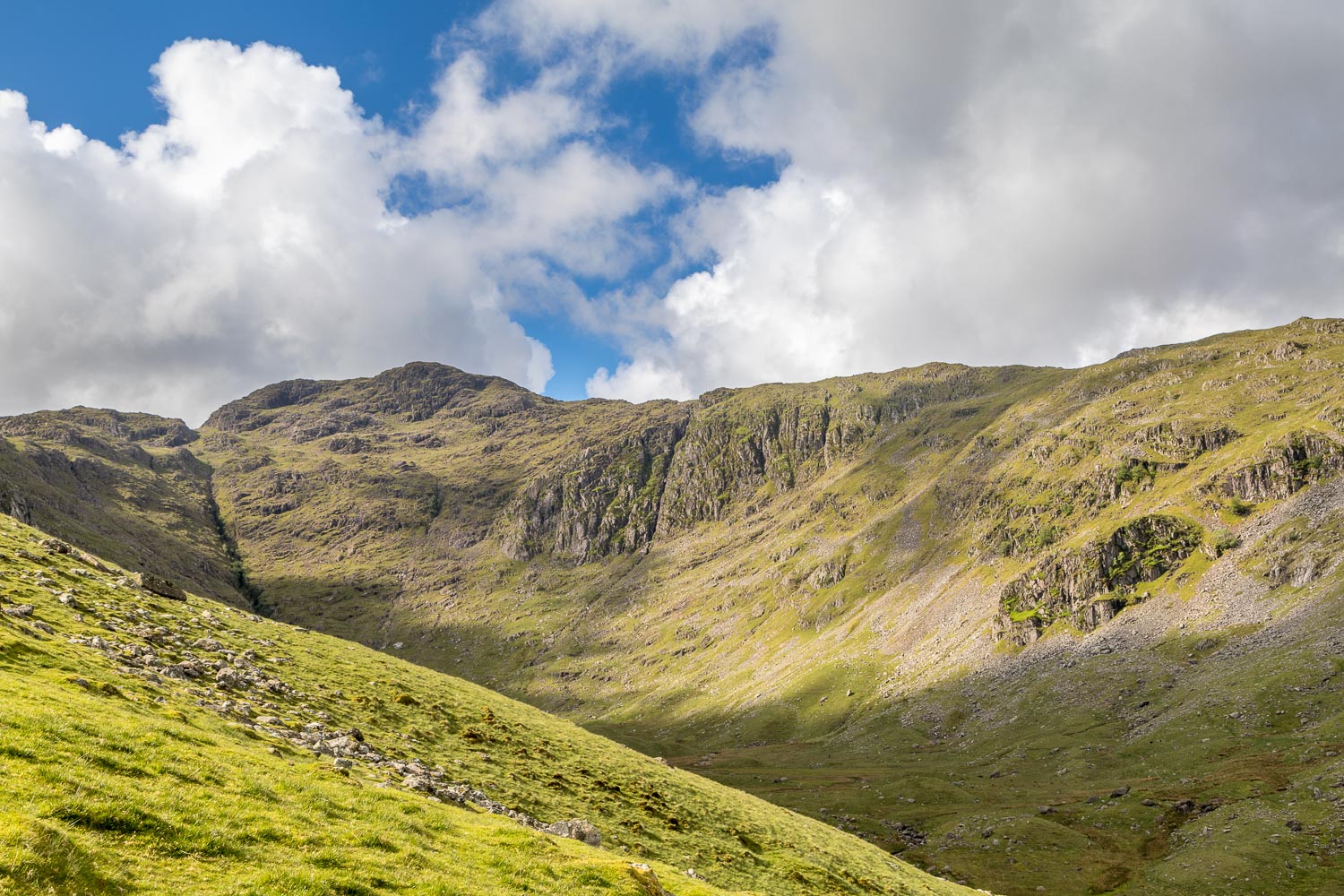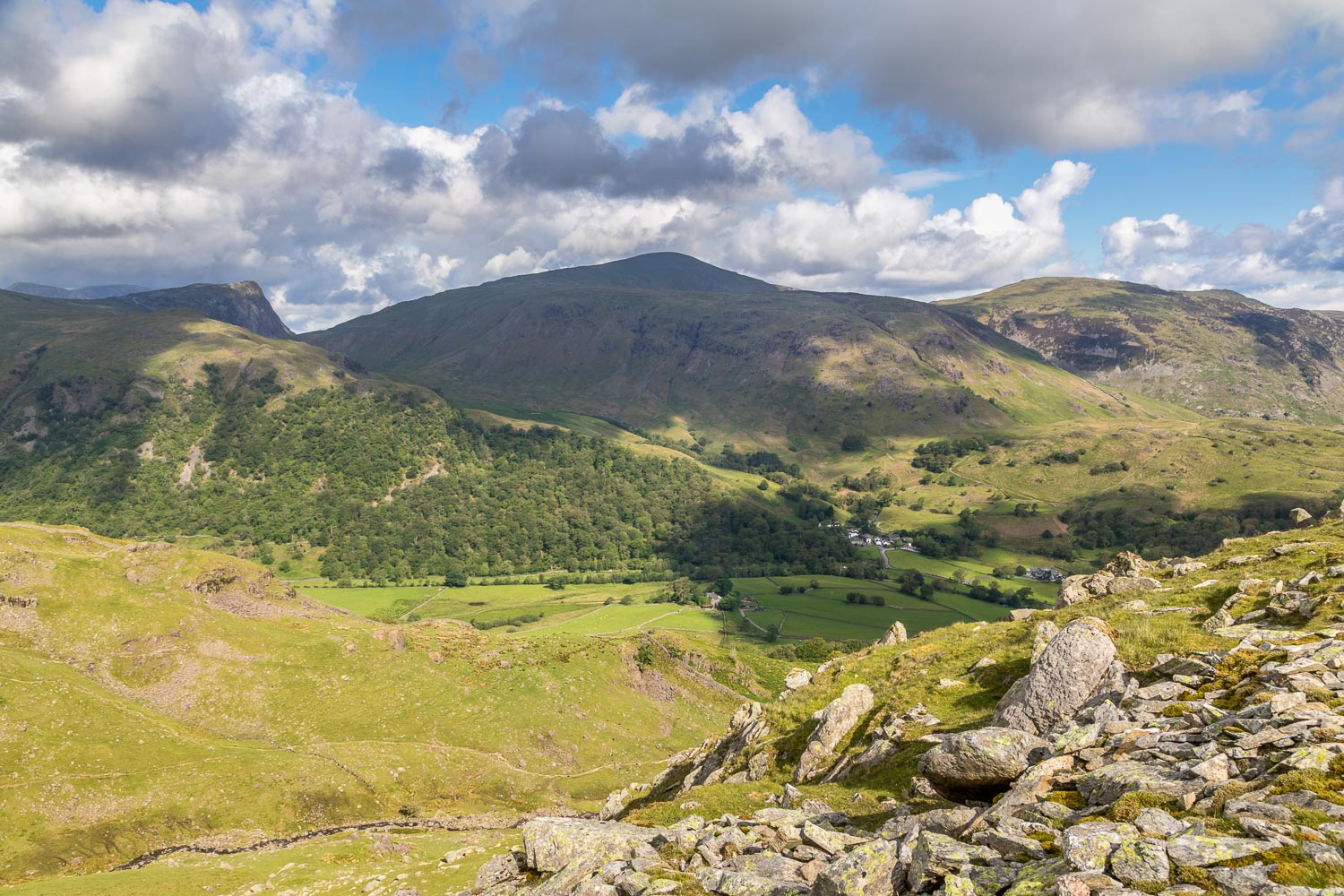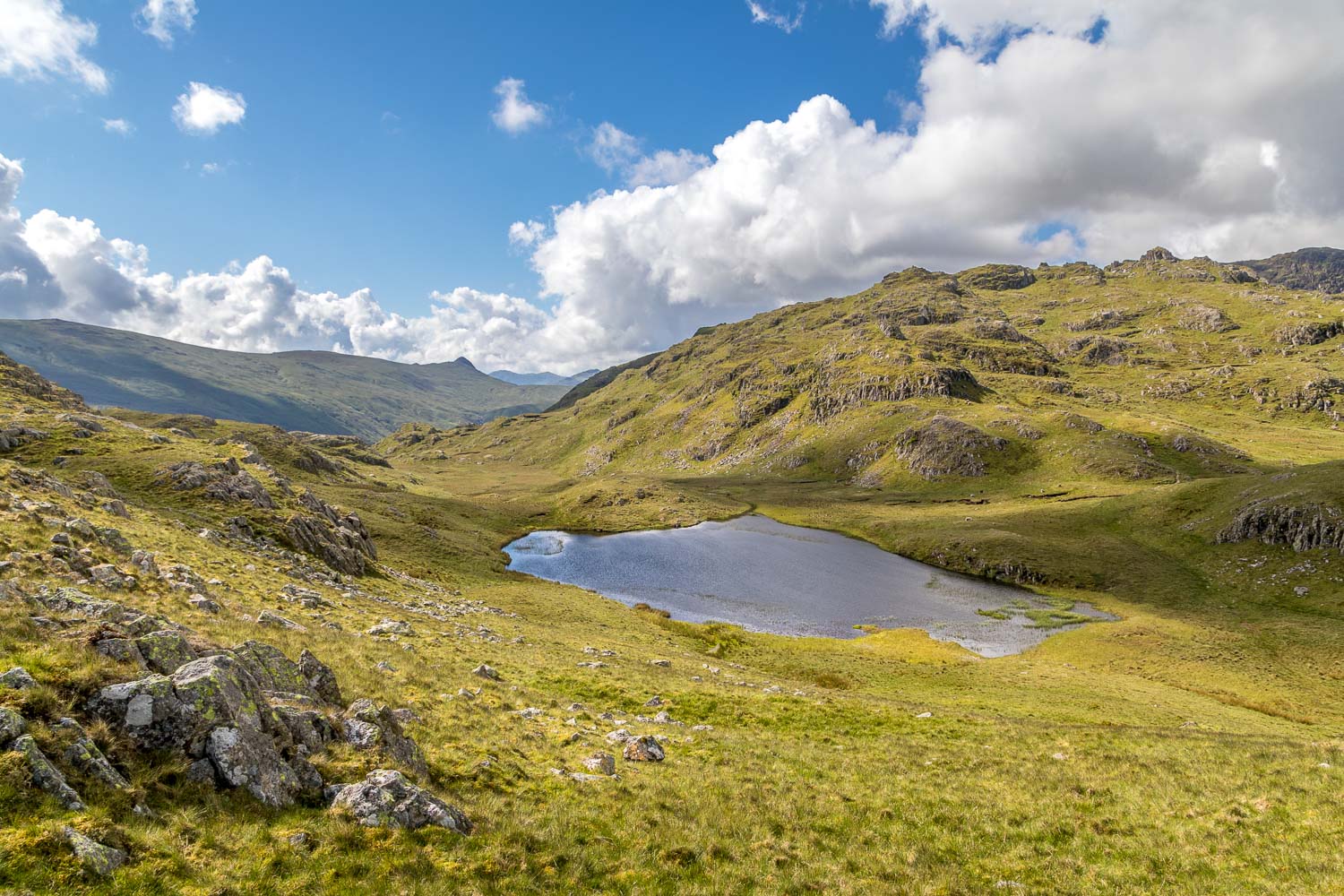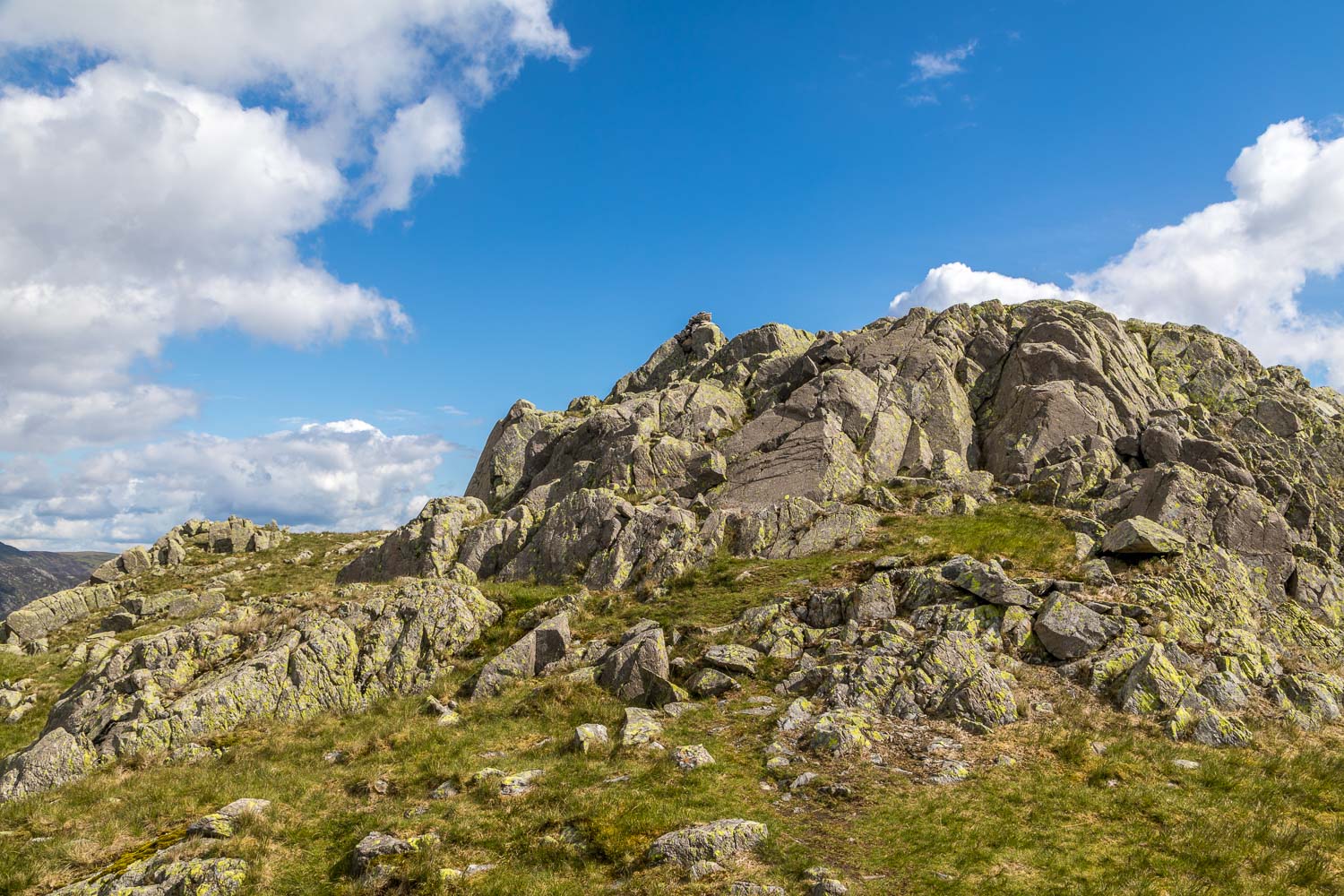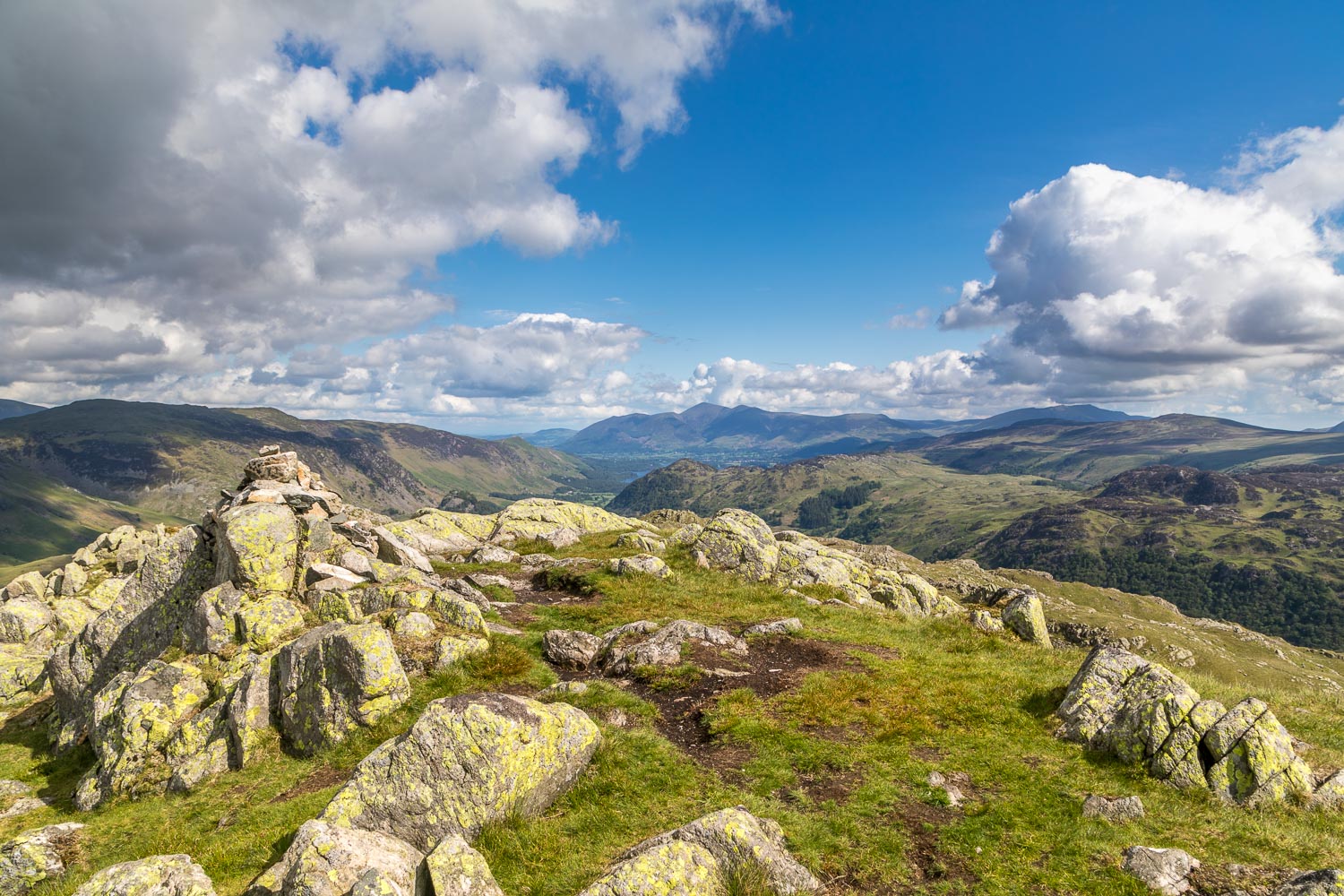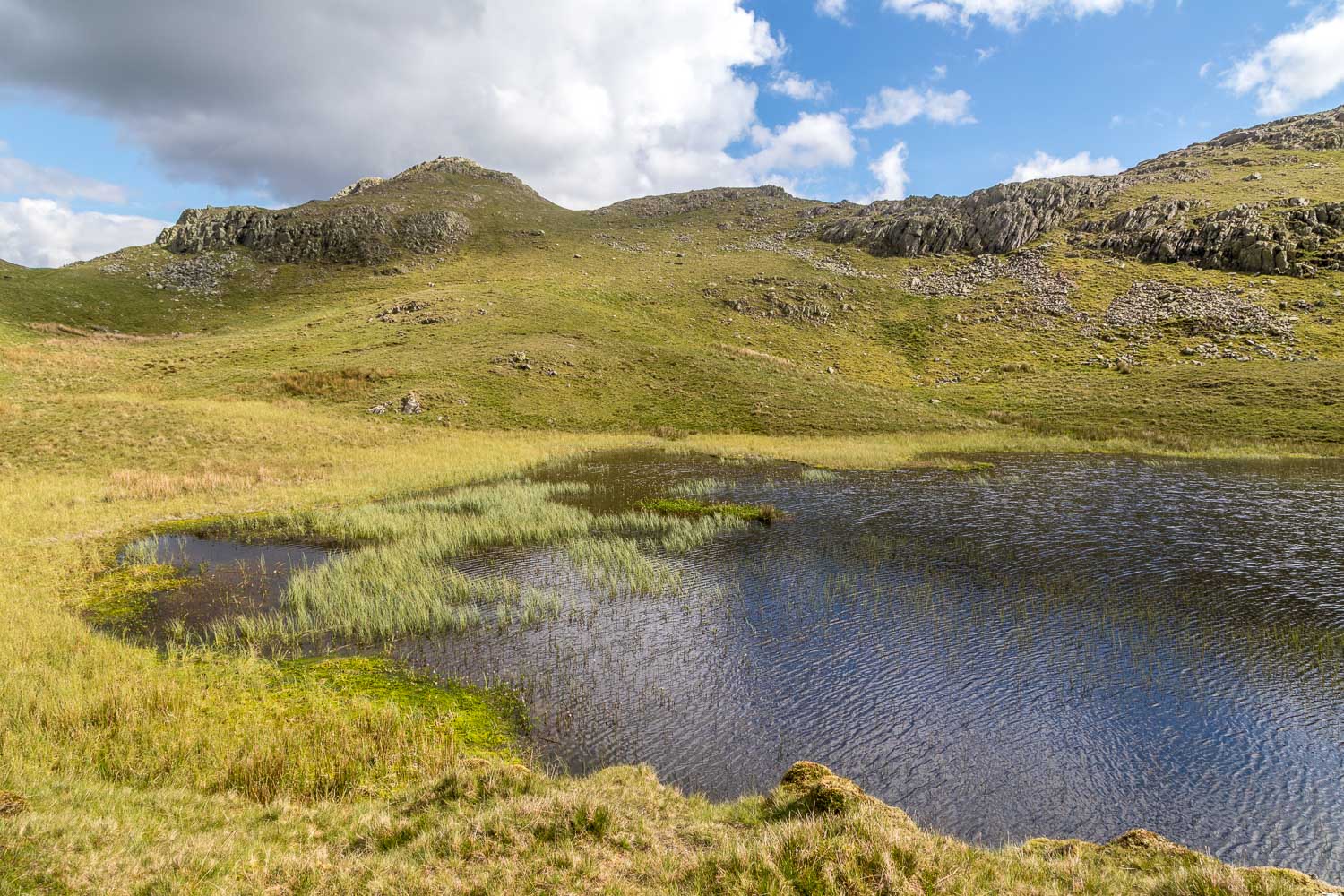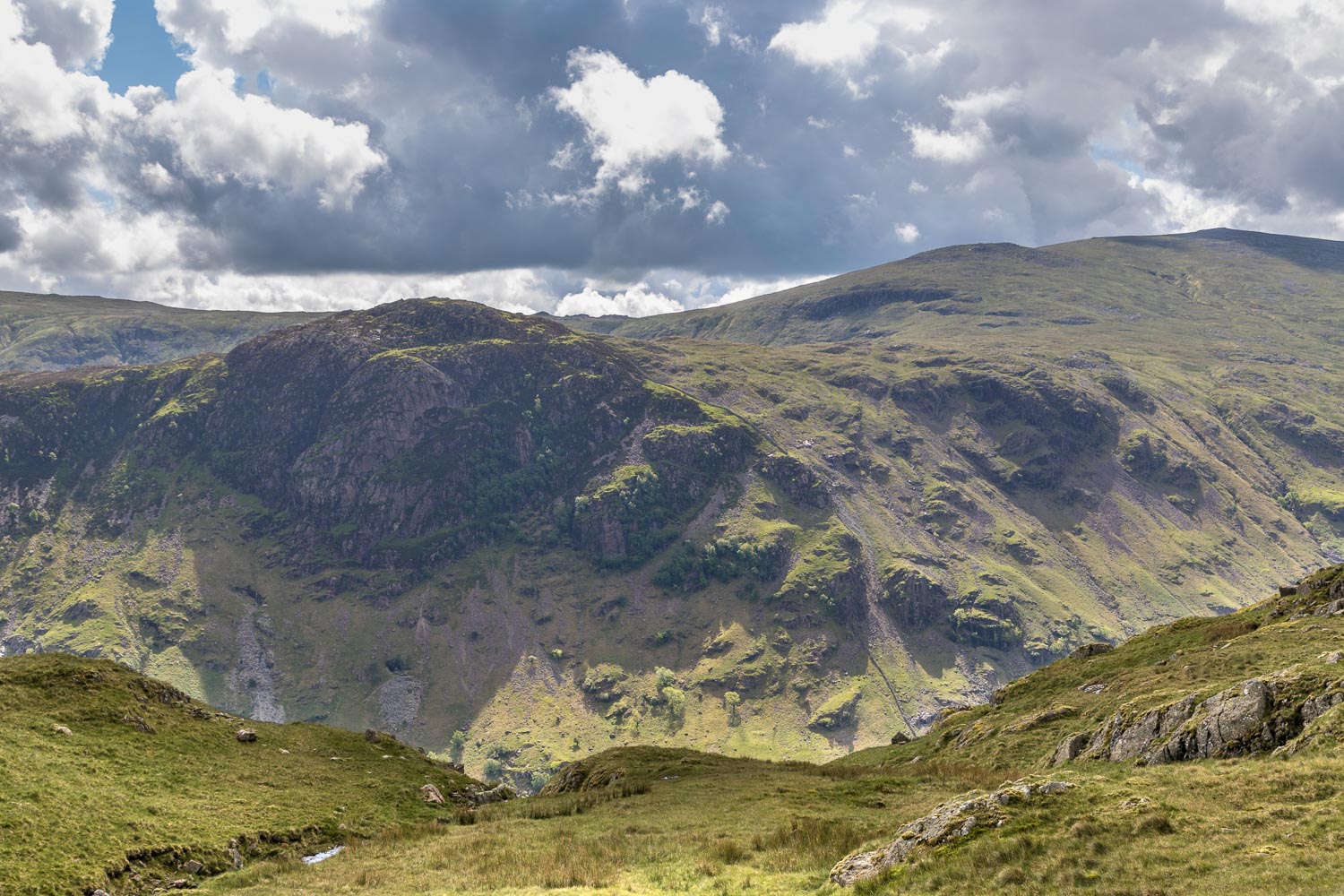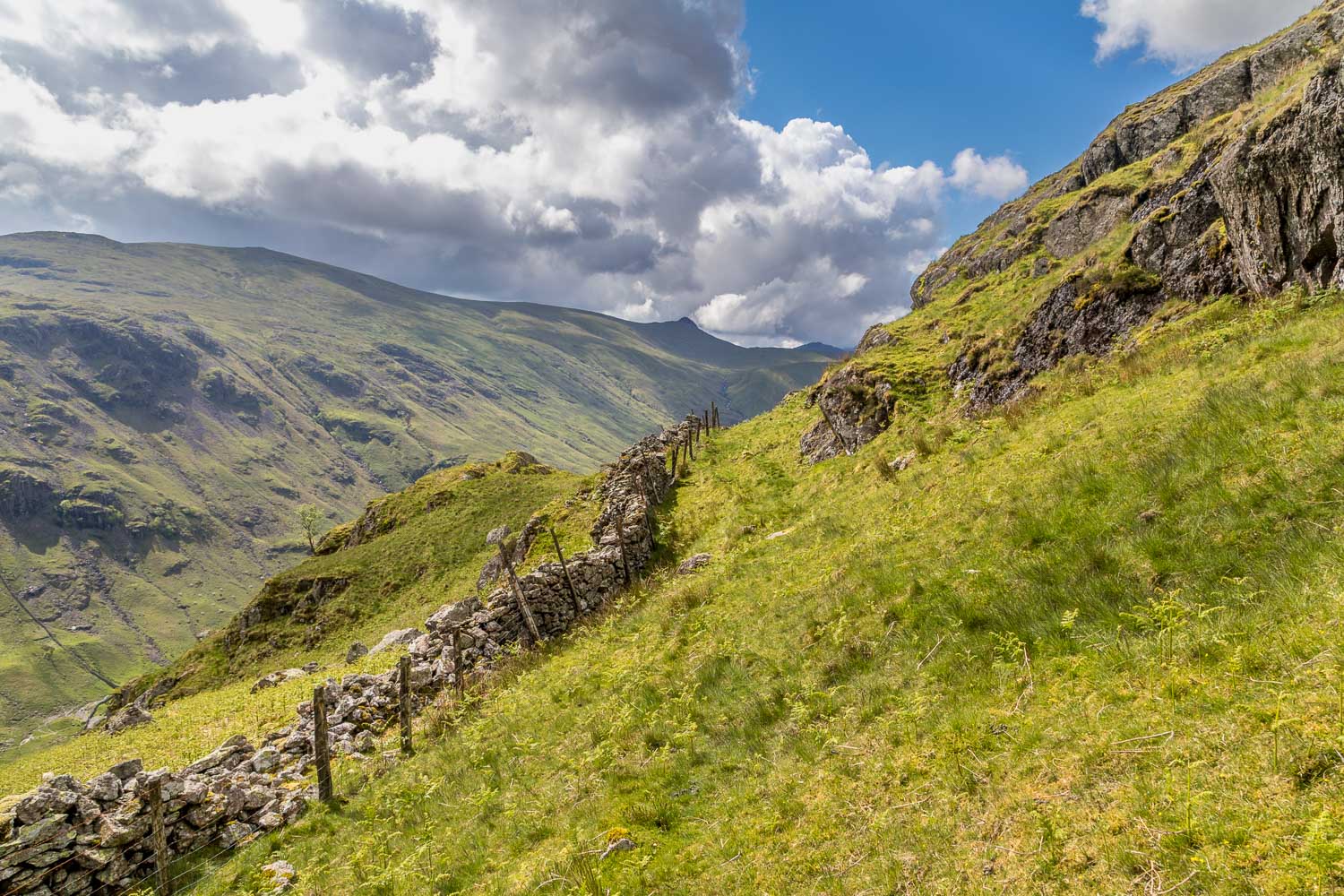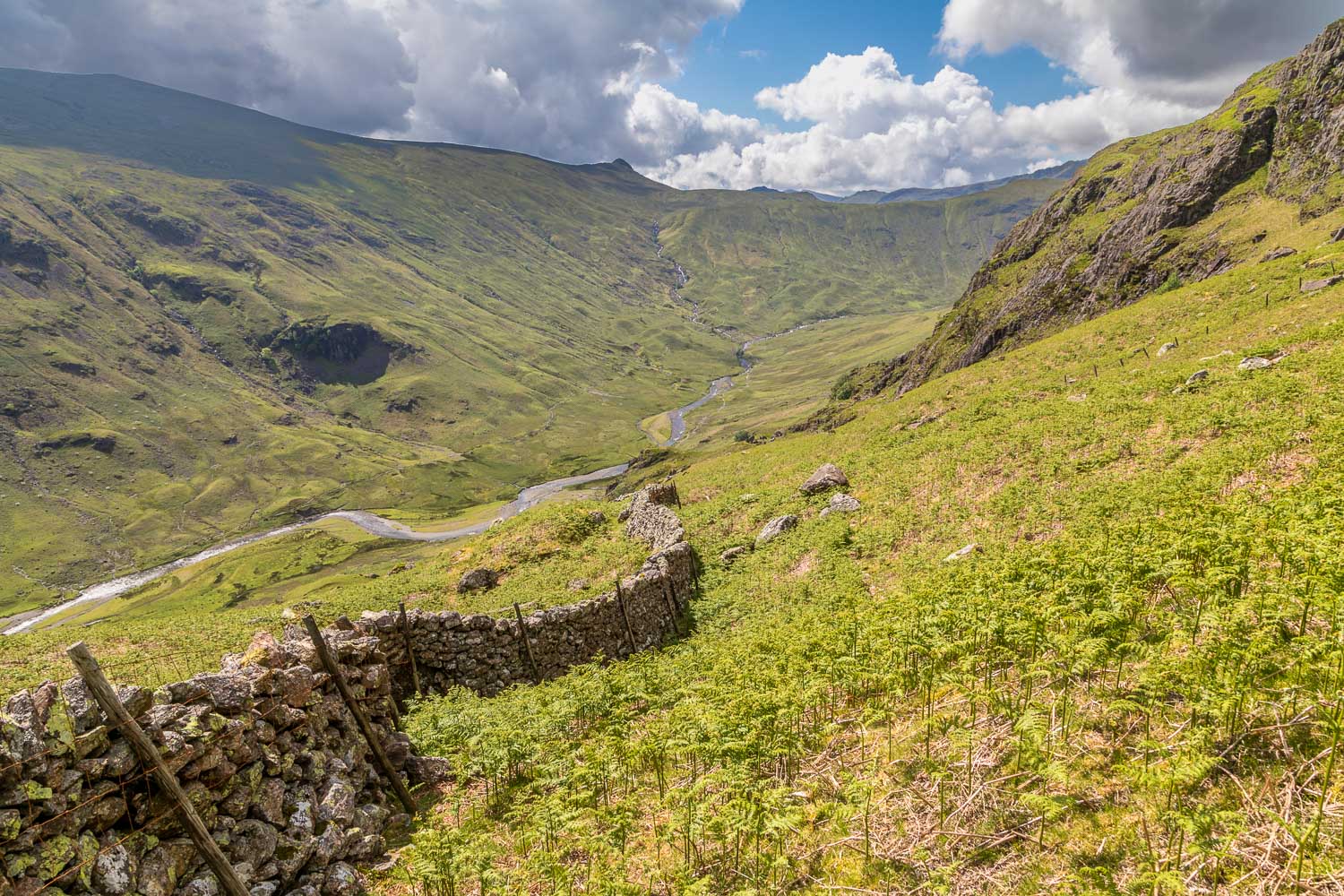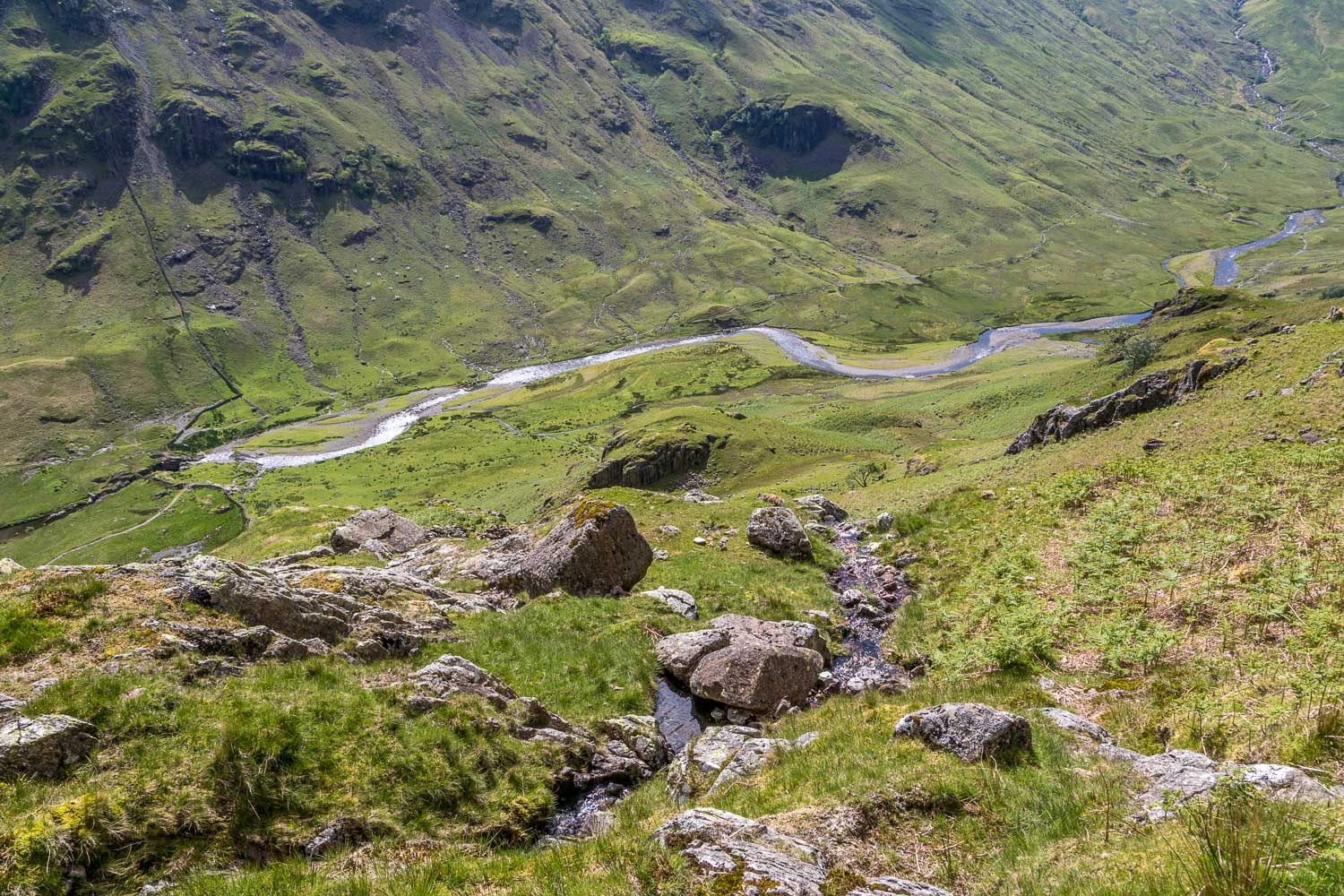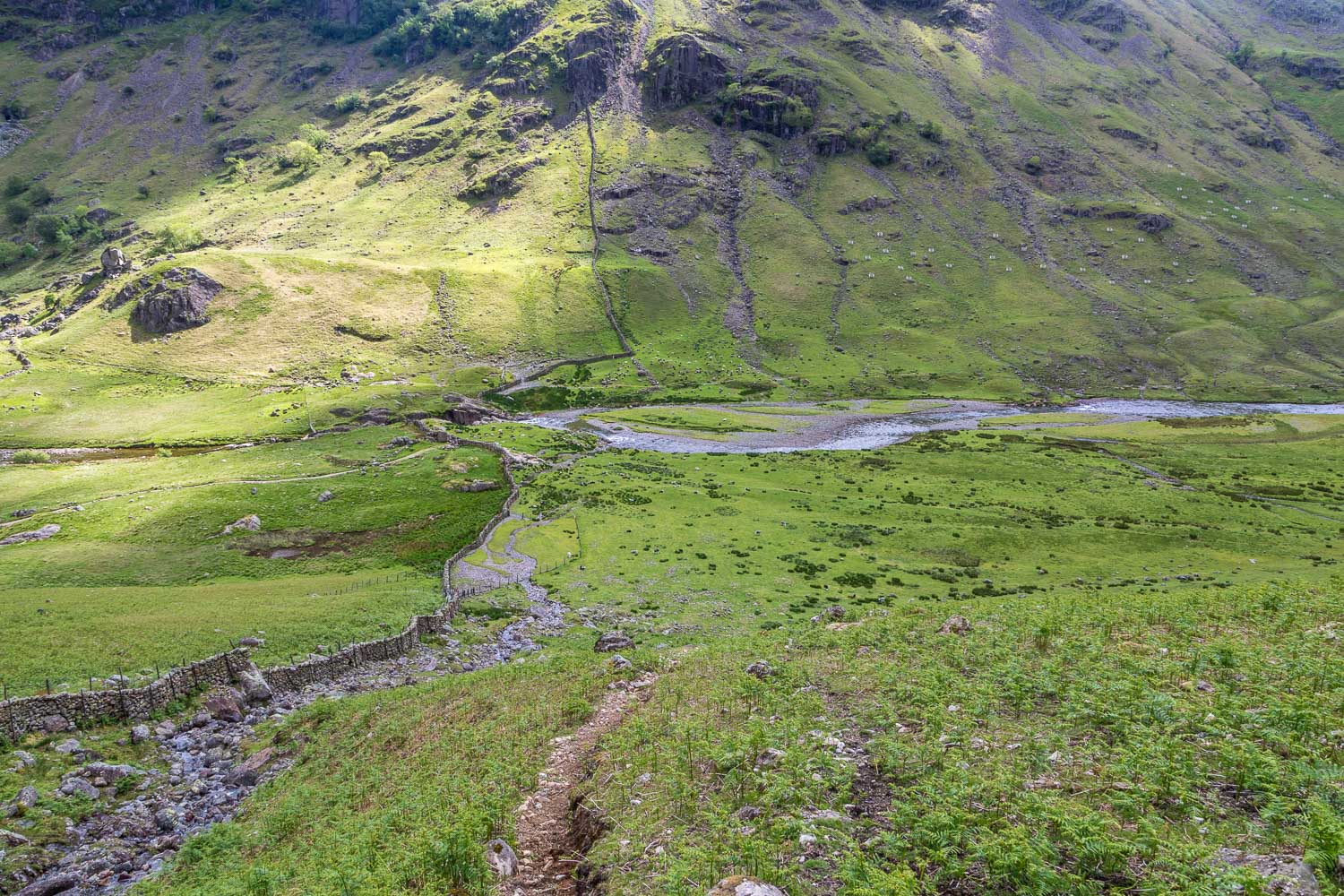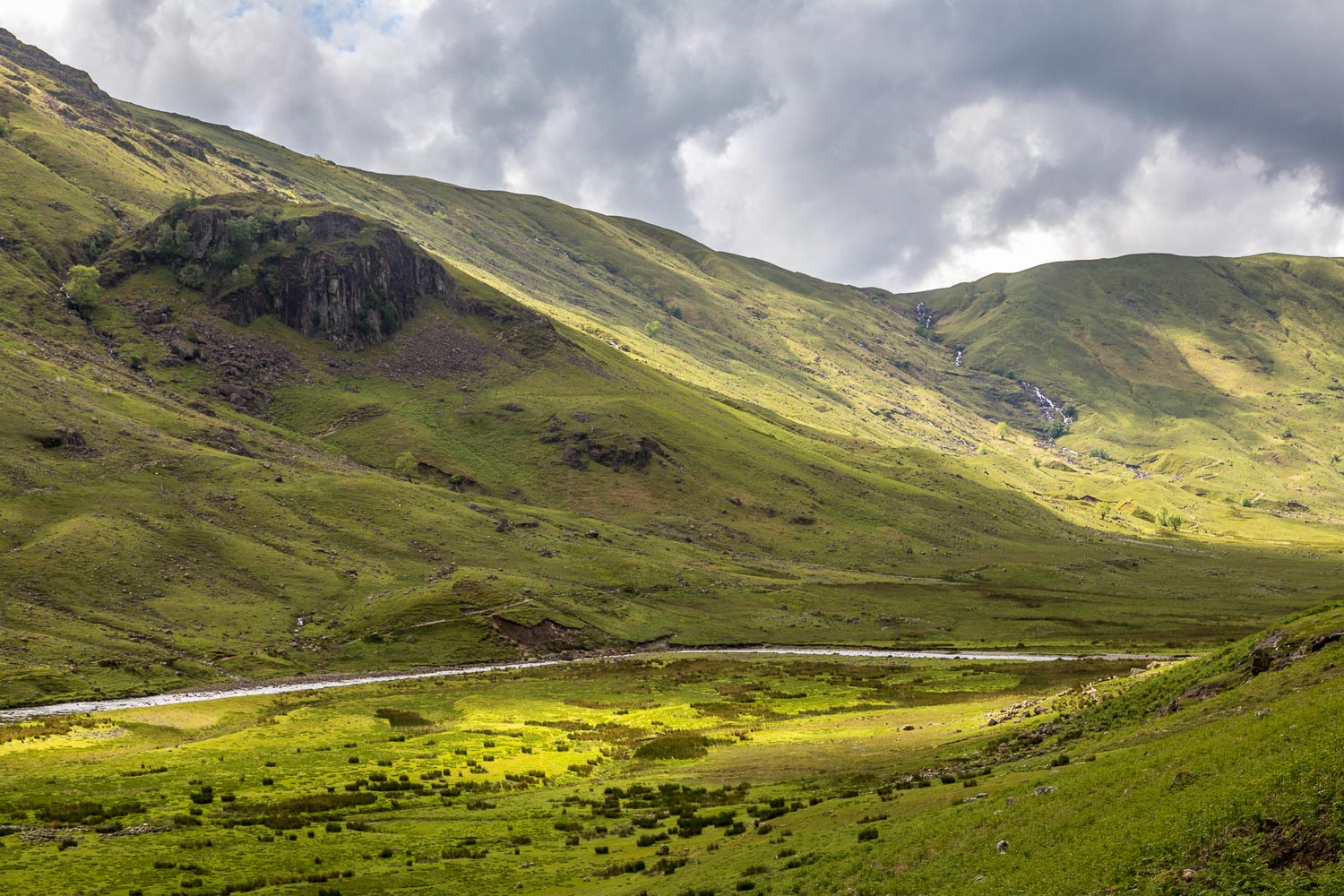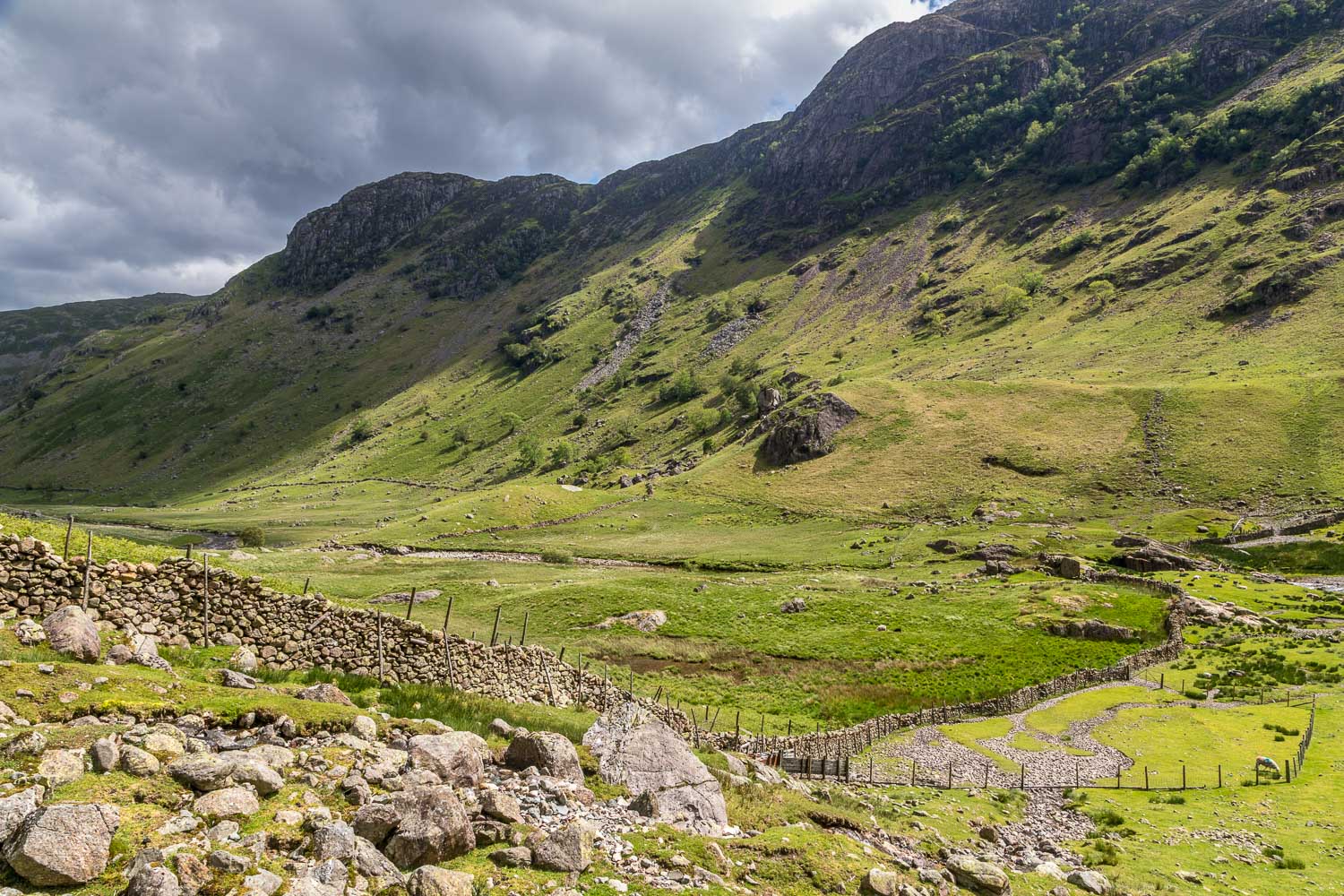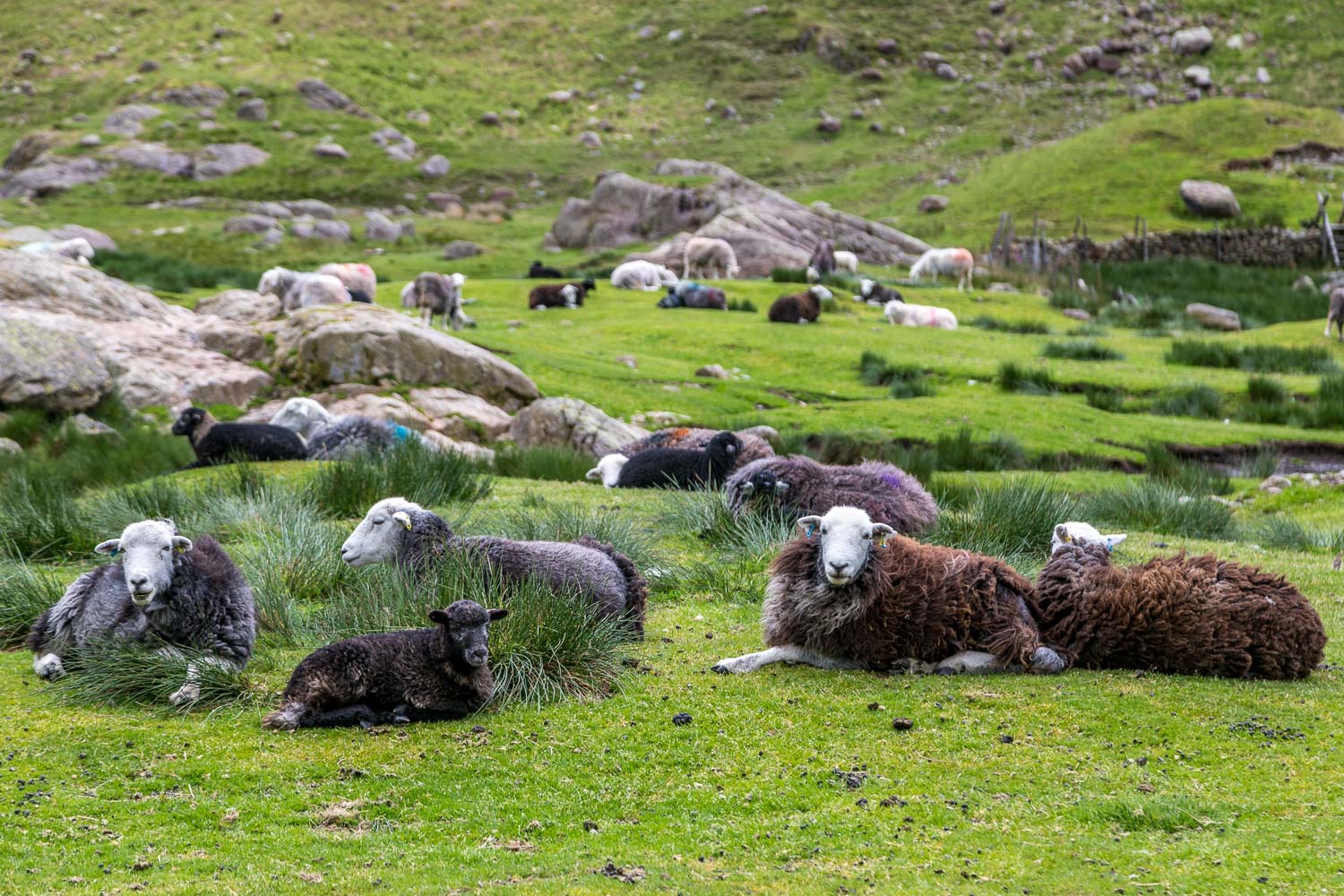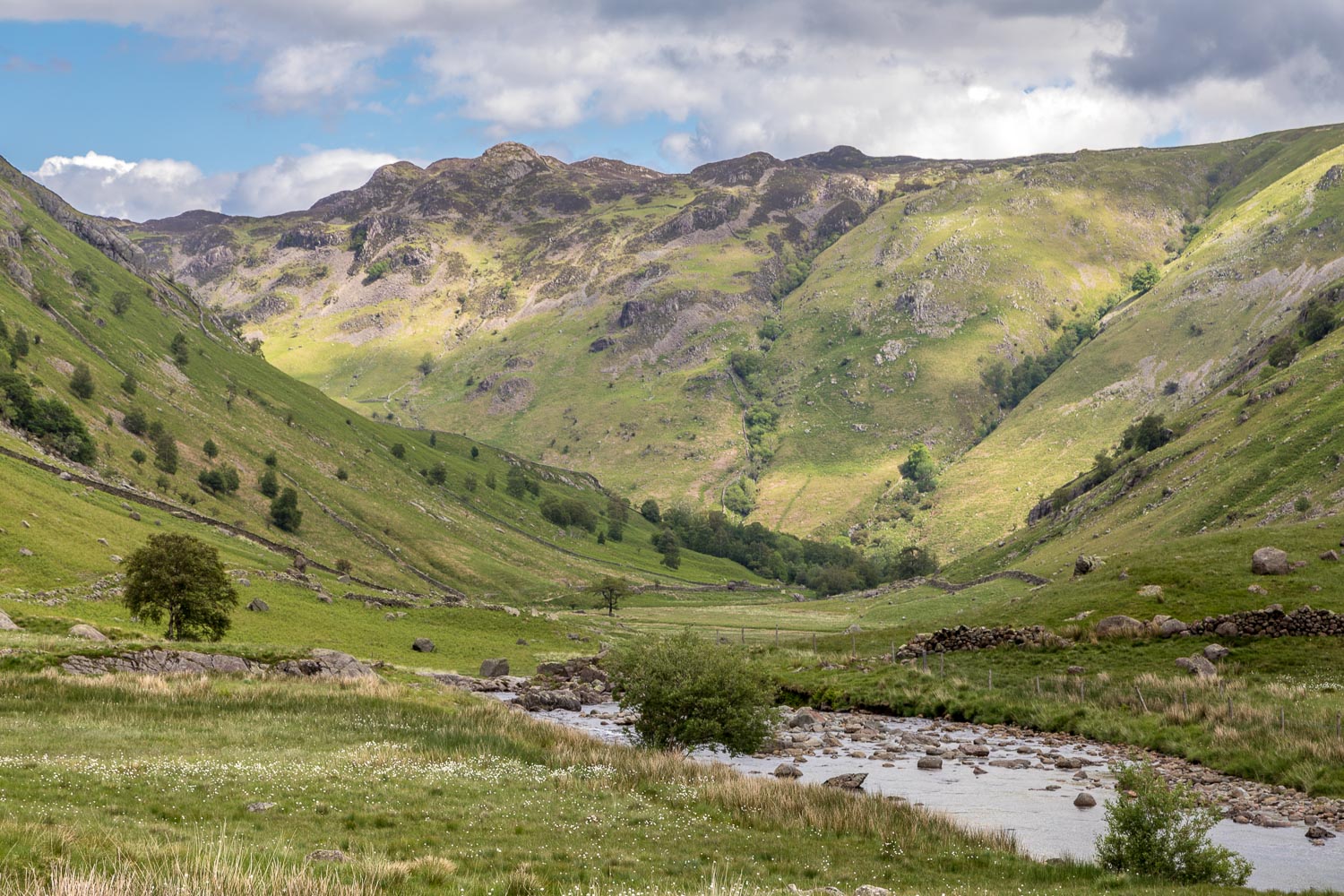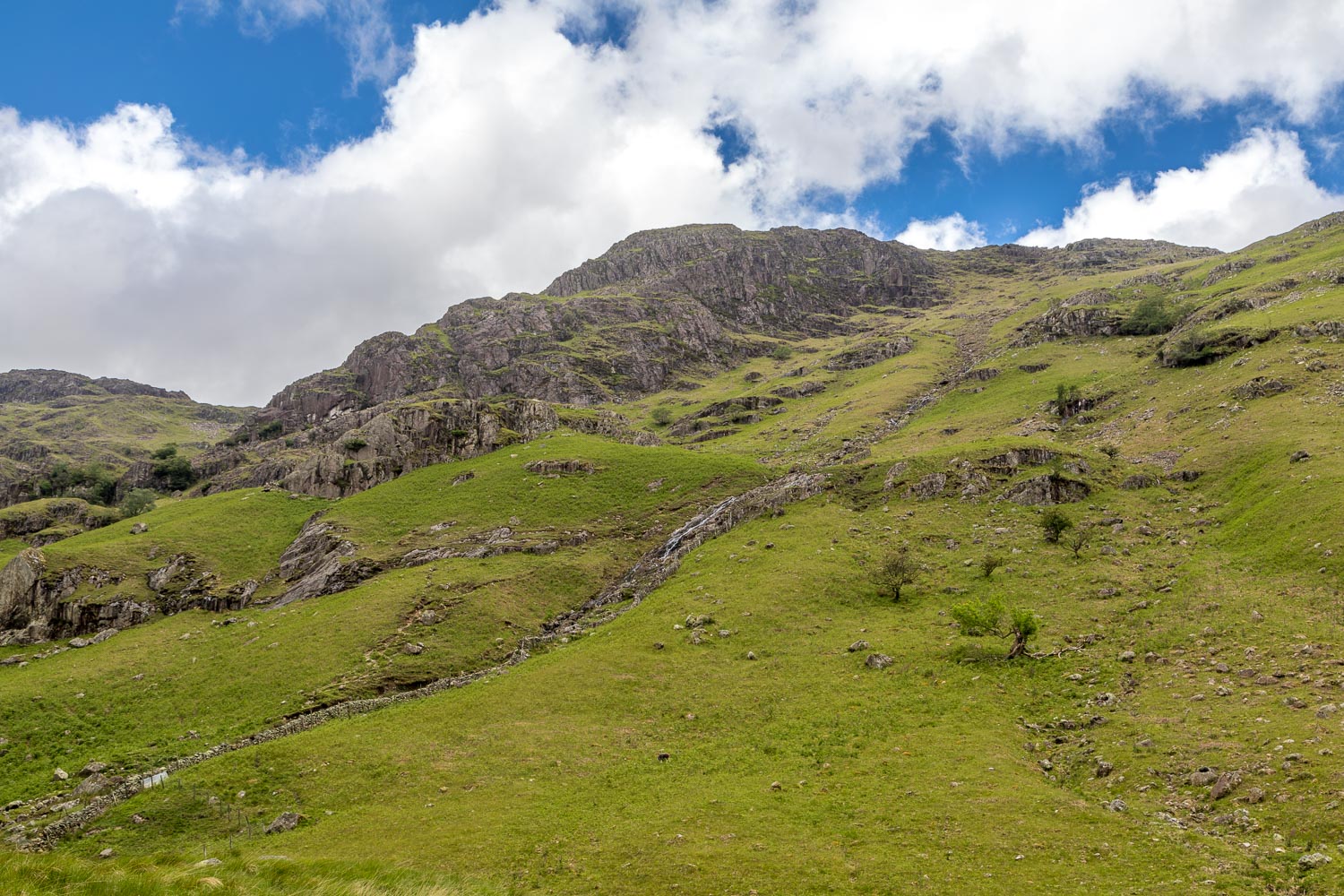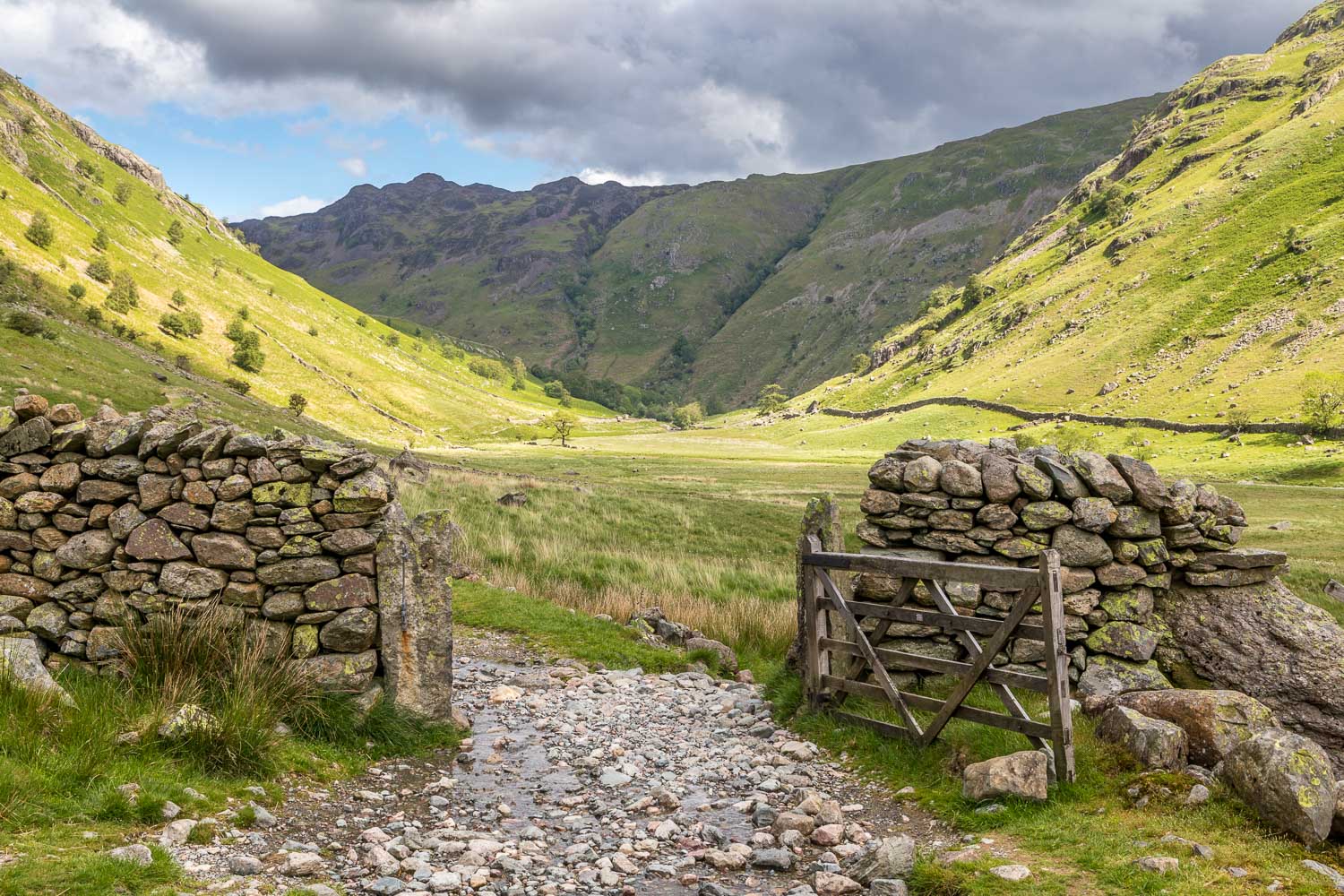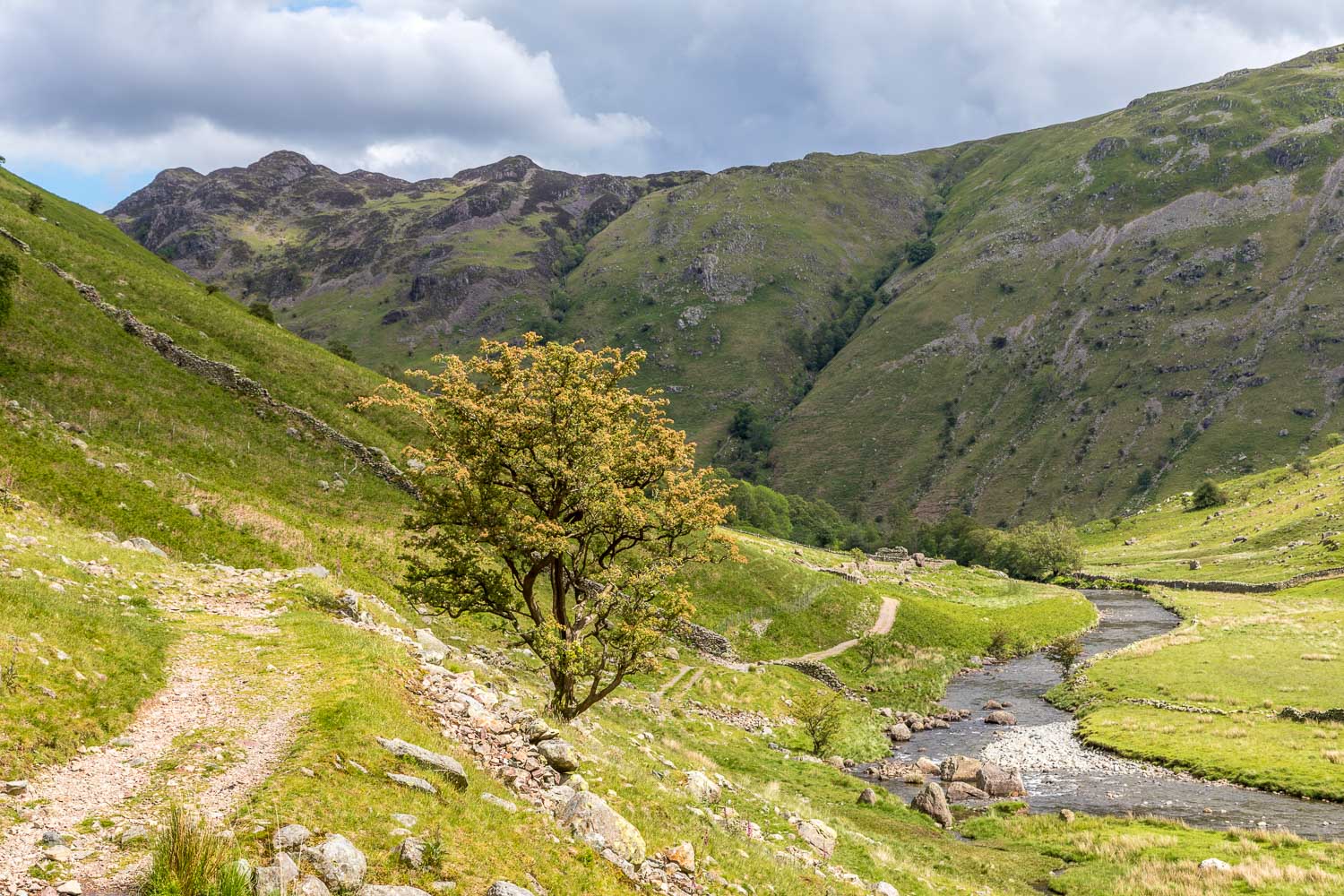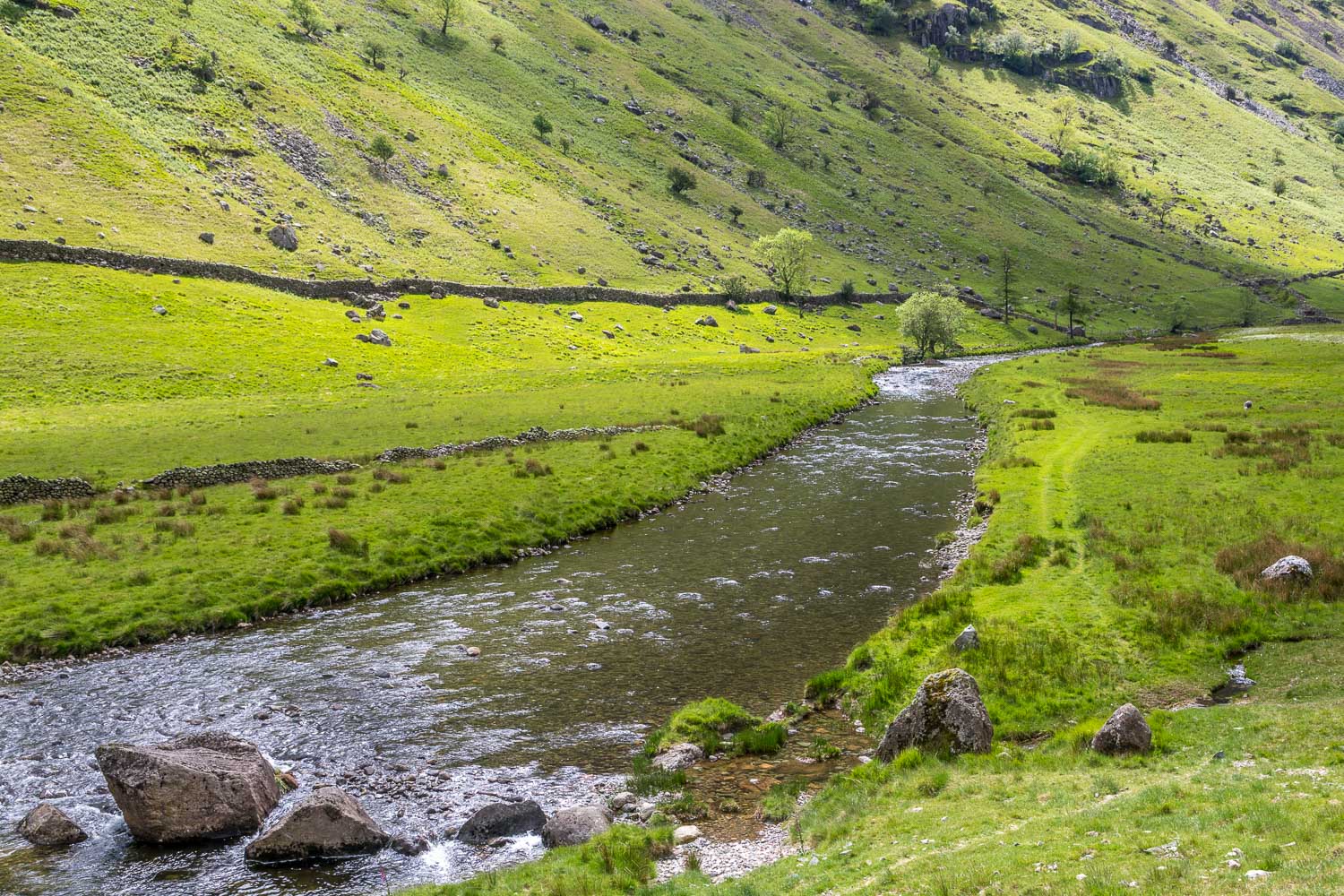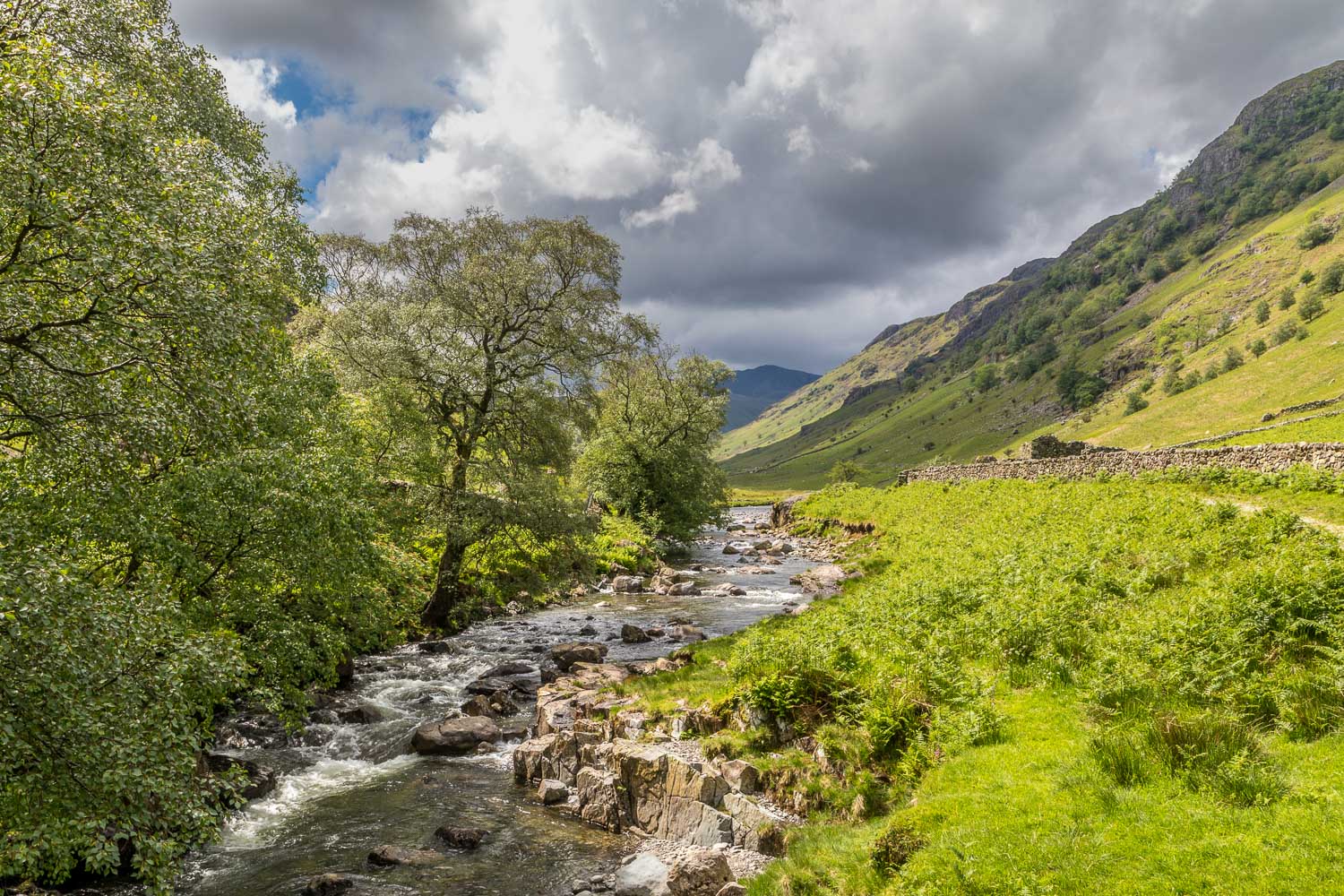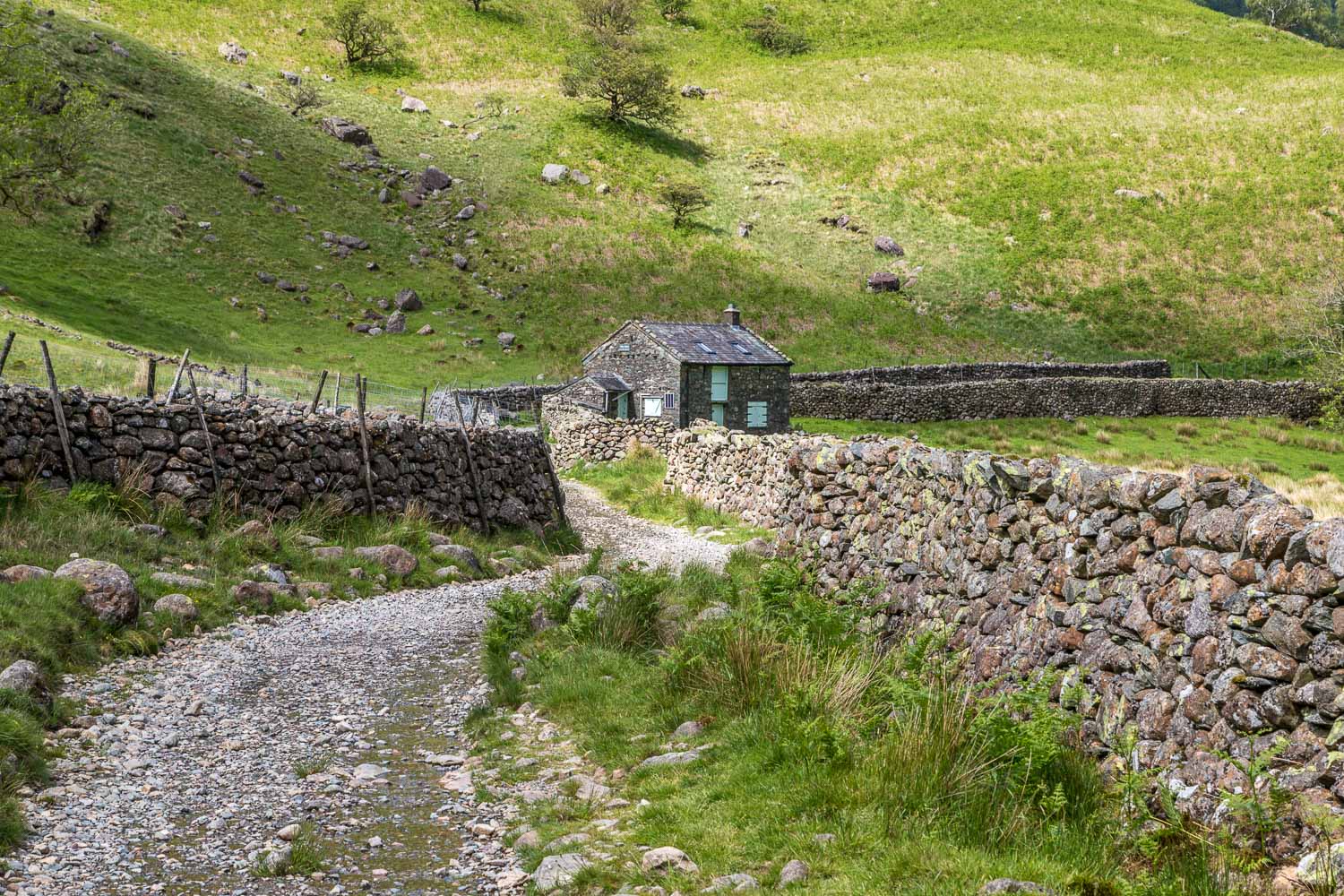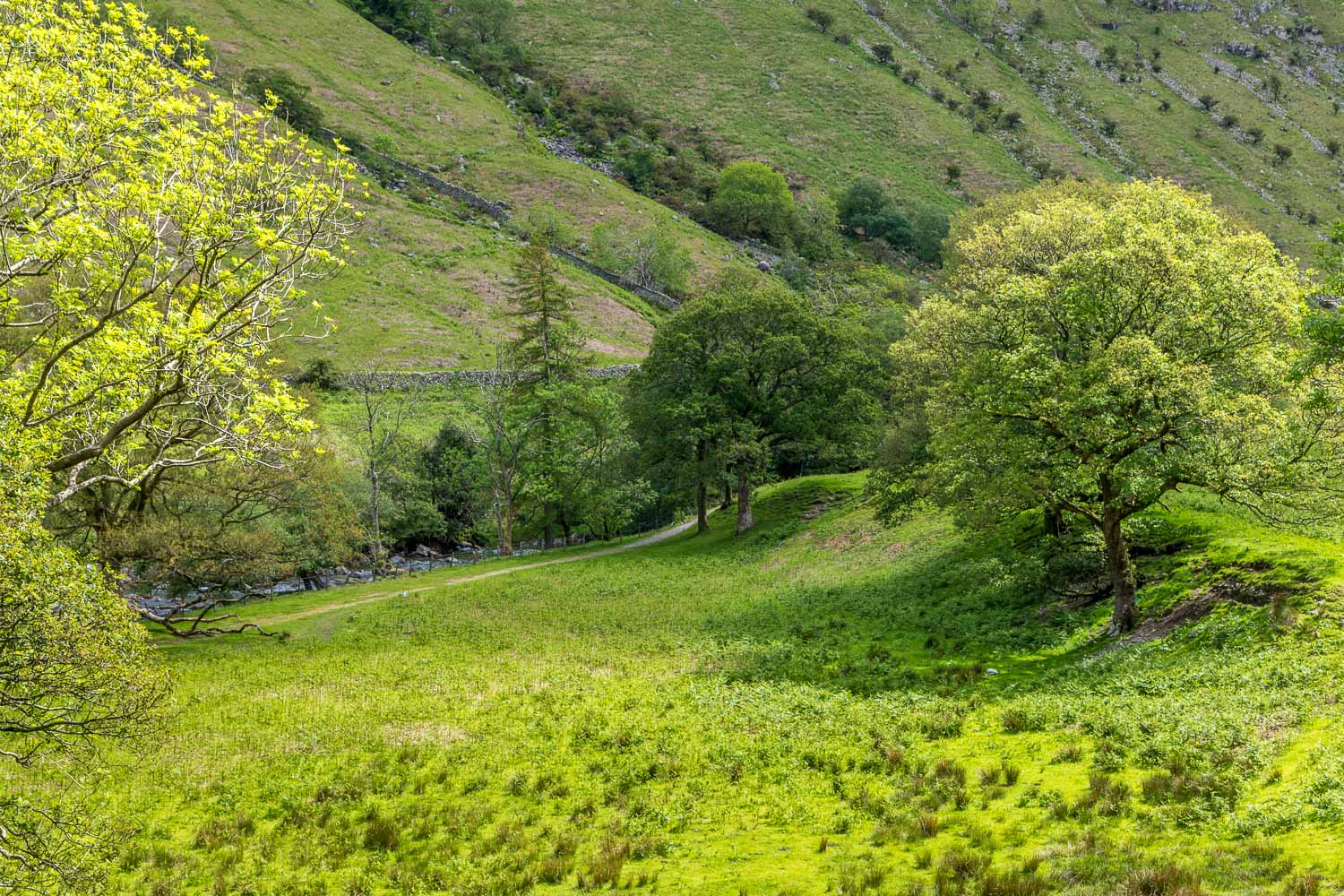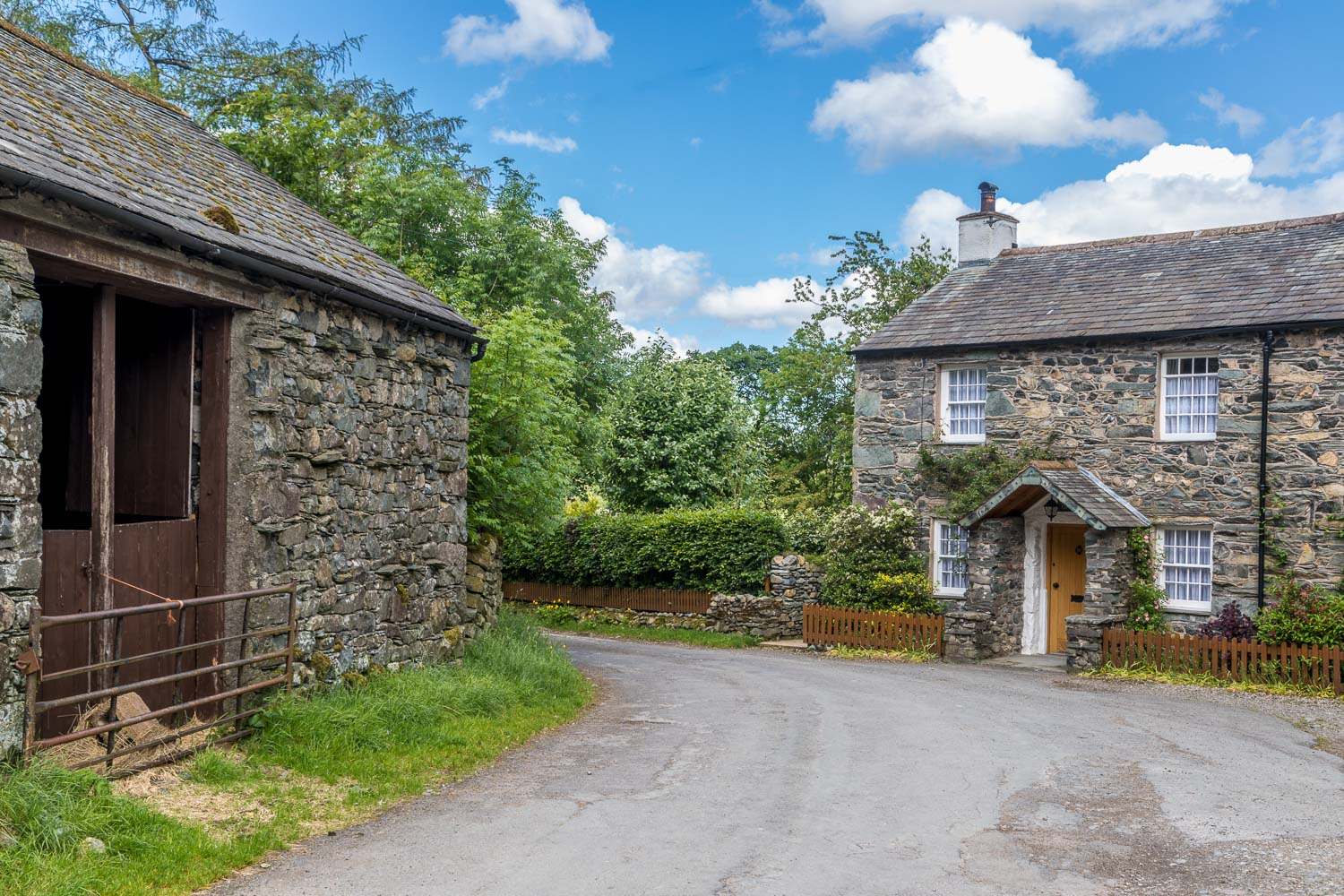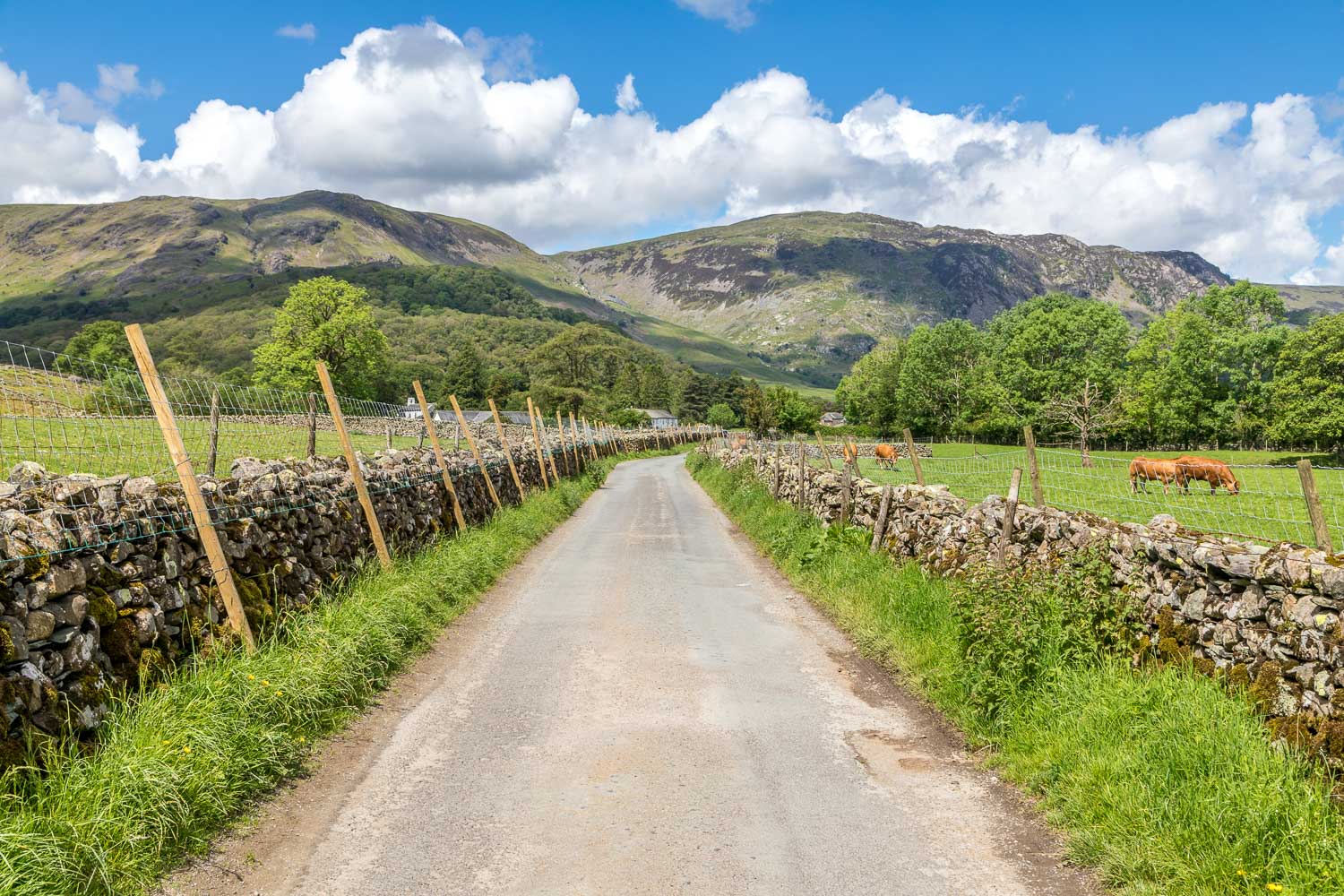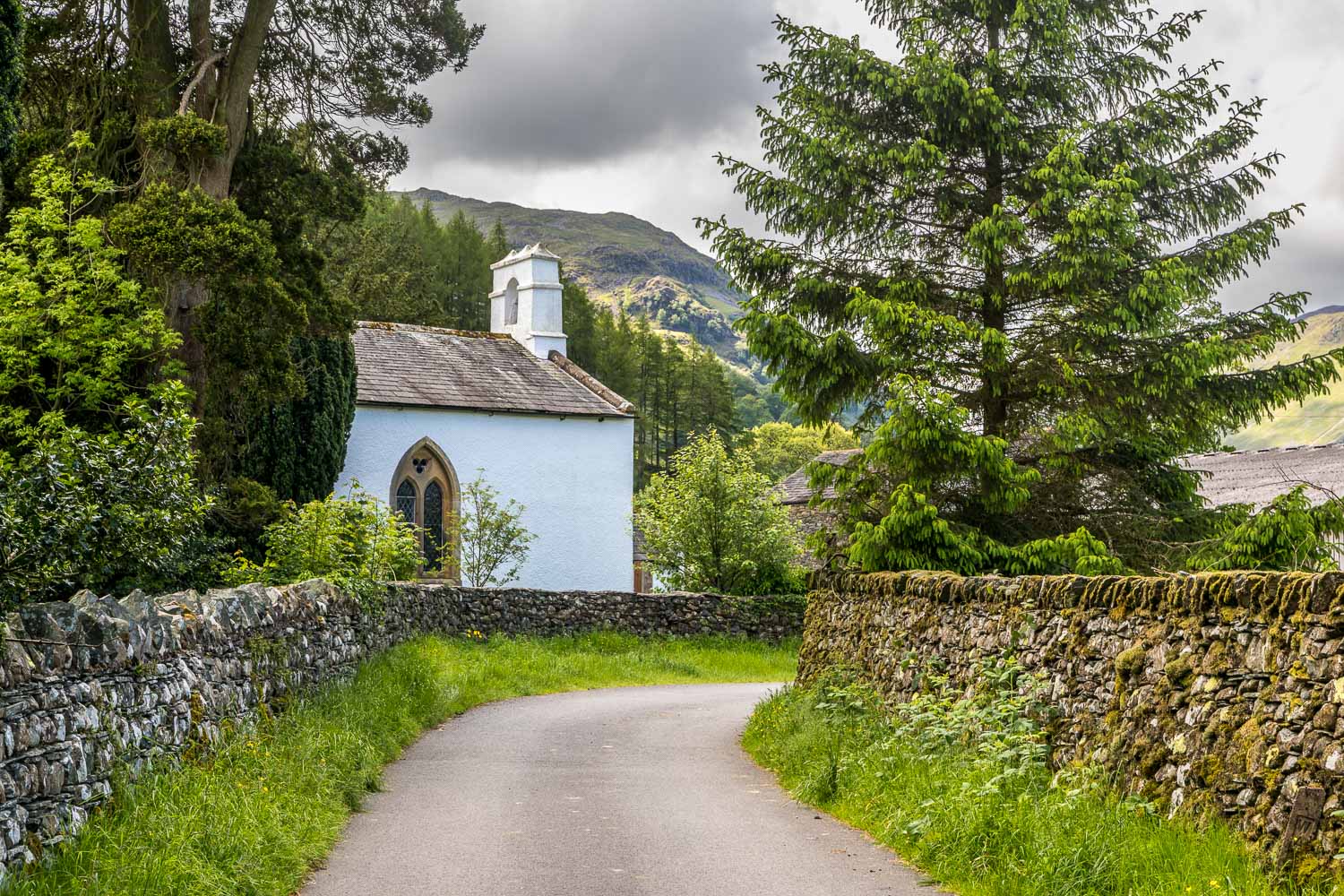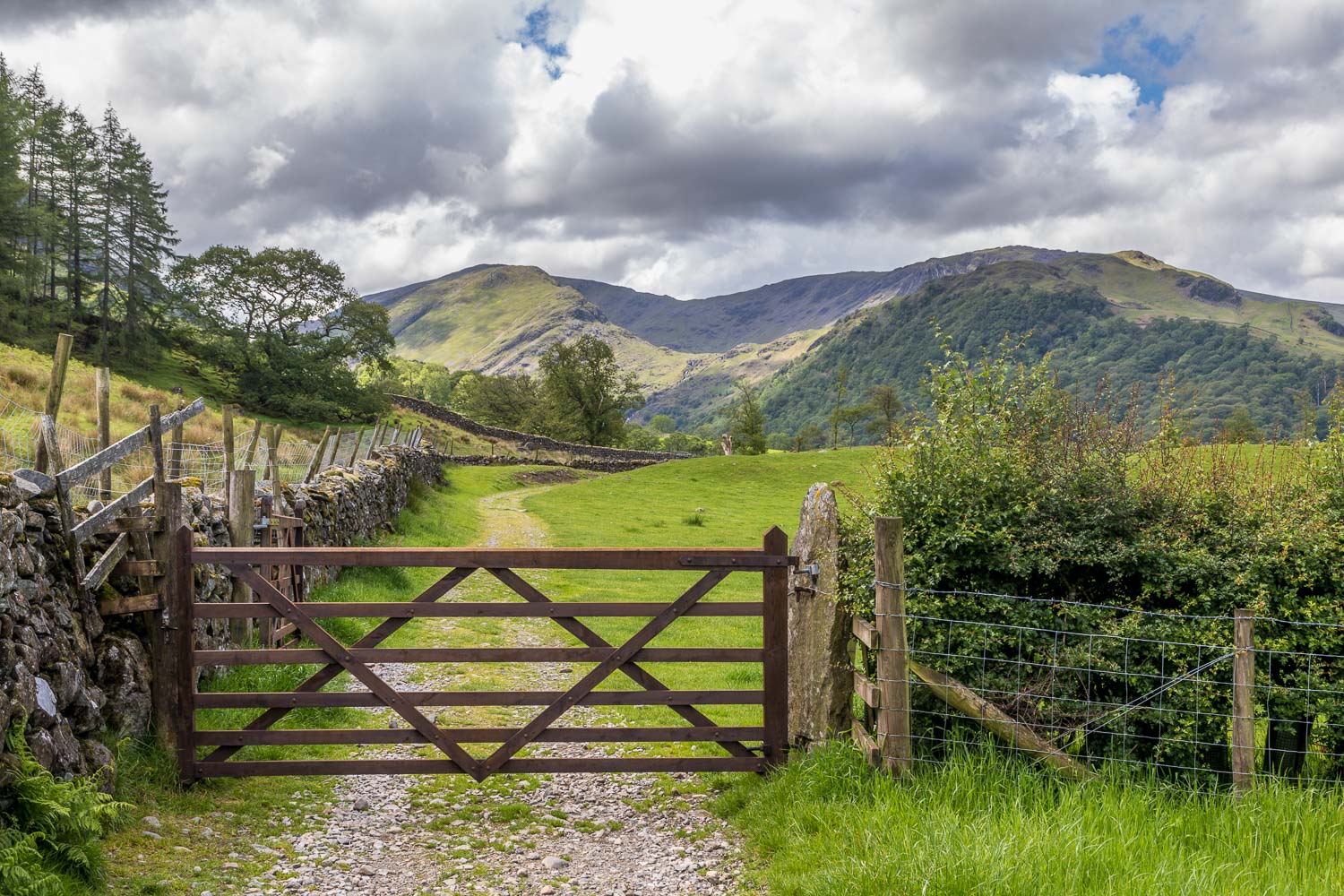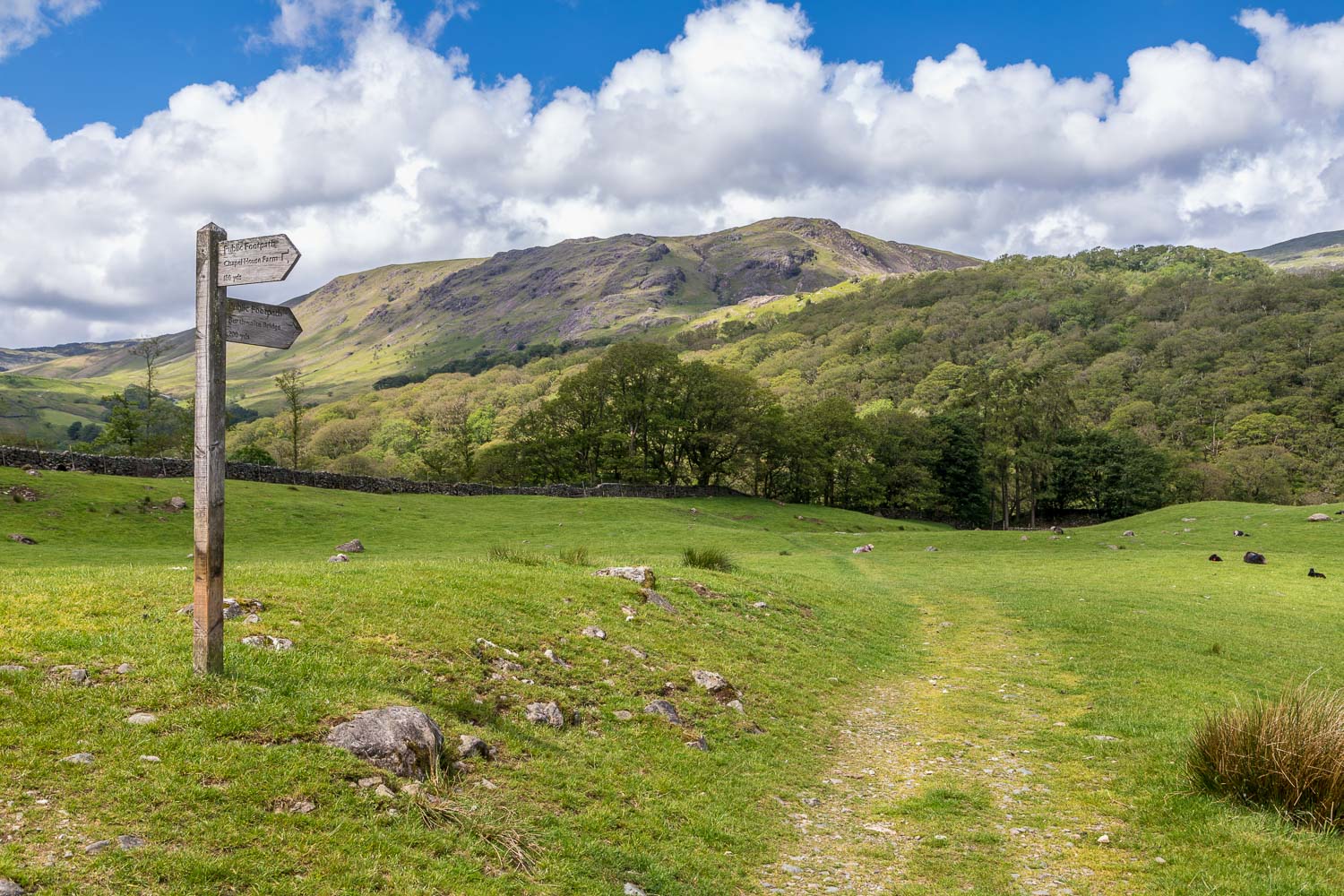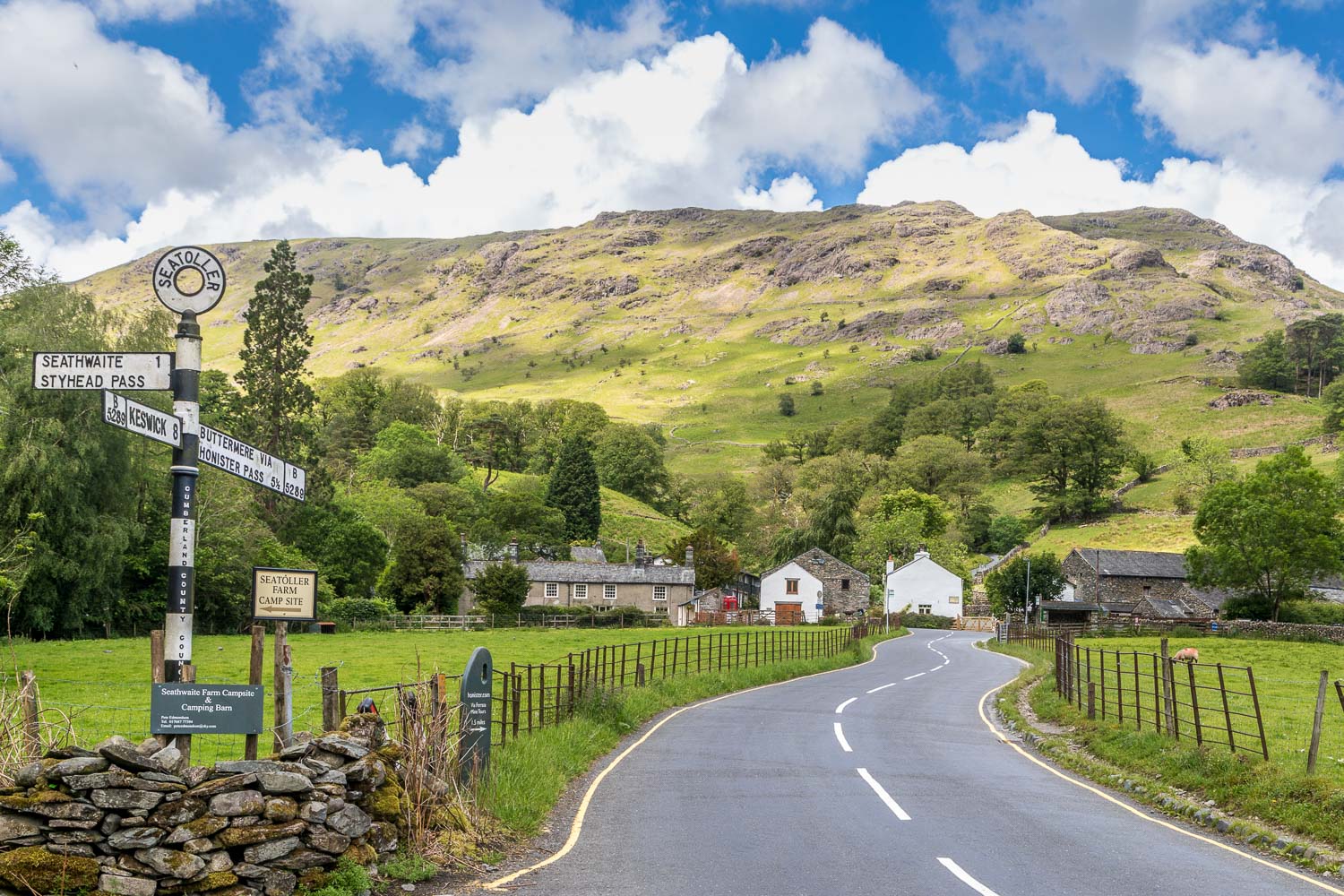Route: Bessyboot, Rosthwaite Fell
Area: Southern Lake District
Date of walk: 6th June 2019
Walkers: Andrew
Distance: 6.5 miles
Ascent: 1,600 feet
Weather: mixed sunshine and clouds
It’s been over 5 years since I was last up Bessyboot, and on that occasion the weather was mixed, to put it mildly, with rain, sleet, hailstorms, gale force wind, along with a few brighter spells. We experienced a white out on the summit, and there were no views whatsoever. Conditions were much better today, and hopefully I’d be able to see a little more of the surroundings
Rosthwaite Fell is divided into two sections, divided by Tarn at Leaves. The highest point of the northern half is known as Bessyboot, and is treated by Alfred Wainwright as the summit of the fell, even though the southern half is higher. Anyone climbing all the 214 lakeland fells as described by Wainwright in his Pictorial Guides is entitled to tick off Rosthwaite Fell on reaching Bessyboot
I parked as before in the National Trust car park at Seatoller and walked out of the village along the Keswick road, leaving it near Strands Bridge. I followed a path towards the foot of the fell, and crossed the old stone packhorse bridge over Combe Gill. The climbing started immediately beyond the bridge as I followed a signed path uphill, with the gill on my right. The path gradually became fainter, and further up disappeared altogether. It’s a feature of this walk that above valley level the paths are very unclear, and frequently peter out. Despite this there were no difficulties. I knew my general direction of travel and made sure that I kept Rottenstone Gill on my right. Eventually I arrived at Tarn at Leaves, a lovely spot below the summit
A faint path leads from the north end of the tarn up to the summit cairn on the most prominent of nearby rocky humps. The views from here were superb. I was glad to have returned to this place to see what I’d missed last time. I decided to follow the same descent route as I’d done on that occasion, initially following the line of Tansey Gill, and then the line of a dry stone wall. I first read about this route in Bob Allen’s excellent ‘Short Walks in the Lake District’, in which no mention is made of the gradient. If it weren’t for that, and the fact that I’ve descended this way before, I’d have entertained doubts about proceeding. The route is completely pathless, and whilst there is no threat to life, there is a threat to limb – full concentration is needed during what I found to be a very steep and rather unpleasant way down
It was a relief to finally arrive back on the valley floor, where I joined the lovely path along Langstrath which leads to the hamlet of Stonethwaite. Just beyond the village I joined a path which brought me back to the Keswick road, and from here I retraced my steps back to the start
For other walks here, visit my Find Walks page and enter the name in the ‘Search site’ box
Click on the icon below for the route map (subscribers to OS Maps can view detailed maps of the route, visualise it in aerial 3D, and download the GPX file. Non-subscribers will see a base map)
Scroll down – or click on any photo to enlarge it and you can then view as a slideshow
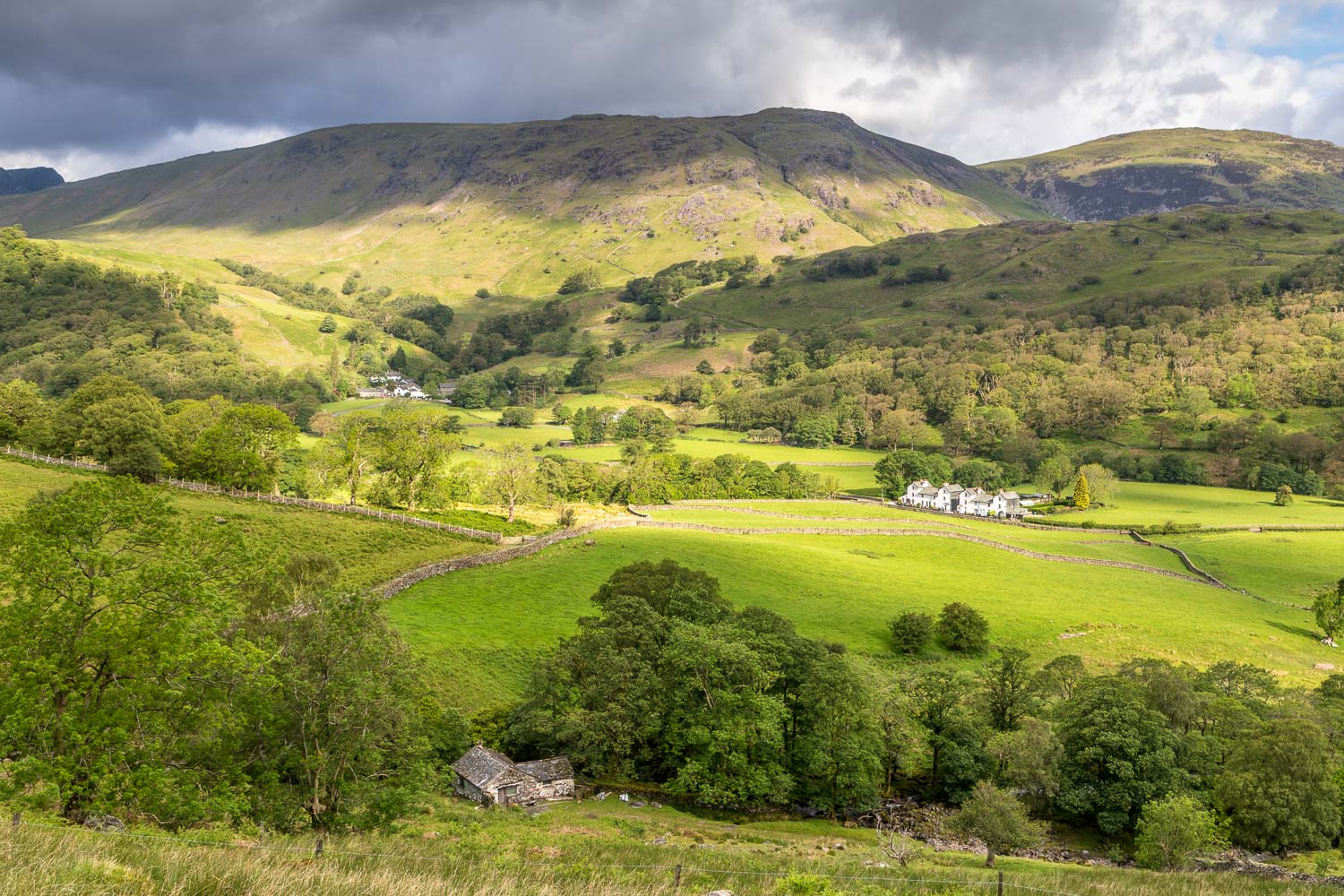
A triangle of the buildings I'd passed so far - Seatoller top left, Mountain View cottages right and Old Mill Cottage below
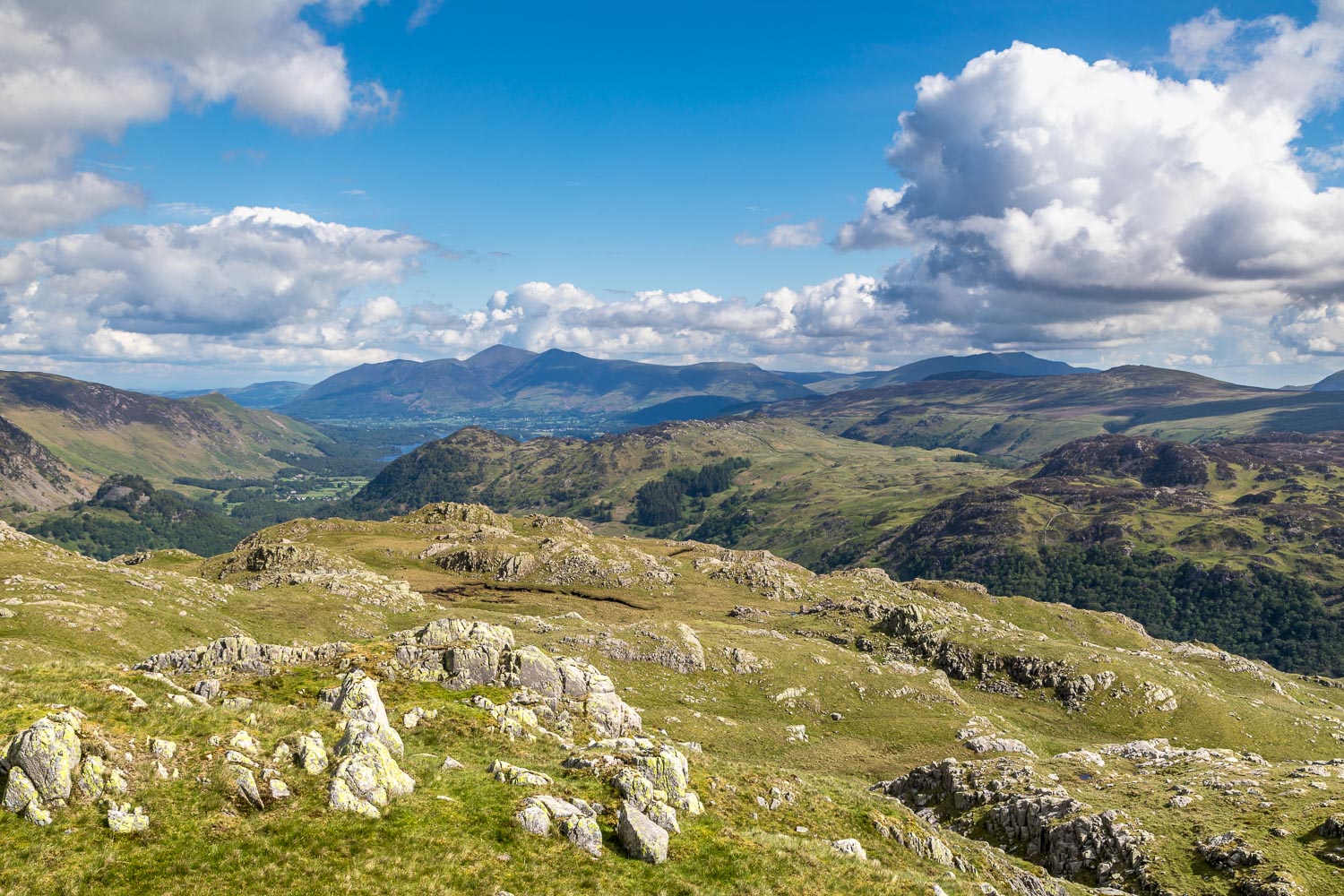
The view towards Derwent Water and Skiddaw, somewhat restricted by Grange Fell but lovely all the same...
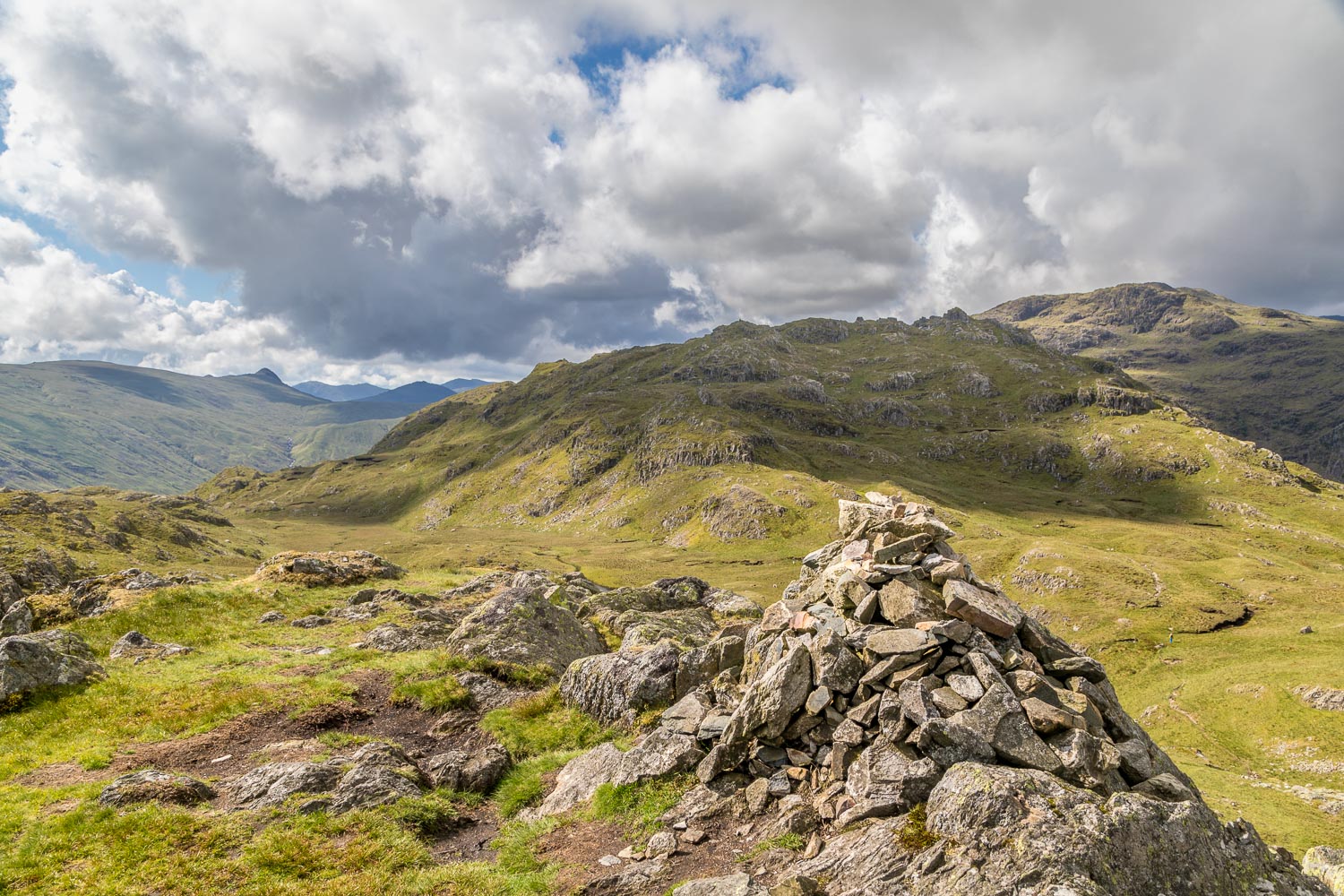
...and now looking back to Rosthwaite Cam and Glaramara, with the pointed outline of Pike o'Stickle in the distance on the left
